Magnepan MG20.7 Loudspeaker
REVIEW by Don Saltzman Feb 03, 2015
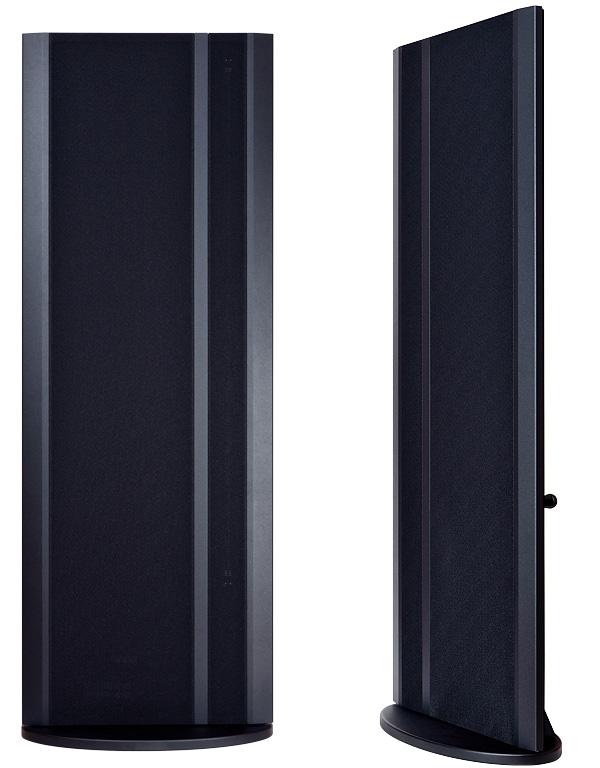

Audio reviews today are rife with proclamations that a product sets new standards, is the best the reviewer has ever heard, perhaps the best in the world, and the like. Because so many products are system- and room-dependent, and because so many older products are still so good, I normally would be reluctant to reach such sweeping conclusions. Nevertheless, after living with the Magnepan 20.7s for over three months, I have no choice but to report that, in my opinion, this speaker does indeed set new standards as to the capabilities of a flagship planar transducer.
Most readers of this magazine are familiar with the overall design concept of a planar loudspeaker. Instead of using cones or domes or horns, planars use a very thin diaphragm of some type to reproduce music frequencies. Generally, the larger the panel or panels that are used, the greater the low-frequency extension and bass output of the speaker. Because of the relatively small excursions of most planars, the low frequencies require a lot of panel surface area. Some manufacturers of electrostatic or other planars (such as MartinLogan and Eminent Technology) are often able to use smaller planar panels because they augment the bass with traditional dynamic bass drivers. This works, but sometimes at the expense of continuity between the planar and cone drivers. It’s all in the execution. Unlike electrostatics, Magnepan loudspeakers utilize proprietary ribbon and “quasi-ribbon” magnetic transducers. One of the major advantages of this approach is that the speakers do not need to be plugged into an AC outlet and there are no transformers to alter the sound. In my experience, the Magneplanar designs will generally play at higher sound levels, without breakup, than most electrostatic designs. On the other hand, most listeners would agree that electrostats probably offer the very last word in microscopic detail.
Planar loudspeakers are dipole by nature, in that the rear sound wave of the panels is generally equal to the sound wave at the front of the panels. This equal generation of sound may require somewhat more care in placement of the speaker, but the rewards are a generous soundstage and ambient field that are difficult, if not impossible, to obtain with traditional dynamic speakers, particularly those that are smaller in stature and use a limited number of drivers. Still, I have heard fans and owners state that they prefer the “more direct” sound of dynamic and horn/cone hybrid systems. They are not wrong that these other technologies may provide a more “upfront” sound, which may be somewhat more dramatic on rock and jazz recordings. I too have always enjoyed the music reproduction of good cone and horn loudspeakers, particularly with their very specific instrumental focus, solidity of image, and ultimate bass slam.
Yet, as an owner of Magnepan 20s and 20.1s for over 20 years (that’s a lot of 20s), I can unequivocally state that once set up properly and with the right amplifiers and associated equipment, the large Maggies can do a remarkable and very satisfying job of projection of instruments into the room. If not quite the equal of large cone or horn systems in that regard, they come surprisingly close. Plus, the large Maggies can provide real-sized instruments on an (almost) real-sized stage, something even many or most of the large cone-based systems cannot do. Planars are also known for the high definition of their bass output. But if all planars have had a traditional weakness, it is in the reproduction at higher volumes of midbass and low bass with slam and authority.
Before discussing the specific qualities of the speaker itself, a few words about Magnepan are in order. Founded by legendary designer Jim Winey in 1969, Magnepan is located in Minnesota where all of its products are made. A recent visit to the factory was enlightening in that it revealed the tremendous amount of skilled hand-labor involved in making each speaker. While Magnepan is justifiably proud of the reasonable prices and high value offered by its products, it seems incredible to me that the company can maintain its prices when so many of the steps in building the speakers are done entirely by hand. I tried my own hand at putting together part of a panel—it would have taken me many hours to perform an operation done in a few minutes by Magnepan’s technician. Not surprisingly, they made me no job offer. Although Jim Winey is now retired, he still offers some design input and the company continues a program of improvement to its entire product line. Jim’s son, Mark Winey, and Magnepan’s long-time marketing manager, Wendell Diller, continue to advance the Magnepan flag.
Magnepan understandably strives to emphasize the relative value of its products. Personally, I believe they understate the competitive performance of their flagship loudspeaker compared to dynamic or horn systems at any price, including those in the $80,000 to $150,000 range, or more. Yes, it is that good. The 20.7s may not do everything a speaker in the $100,000+ price range can do, but they come close in many respects and are arguably superior in other important respects. It is a system of trade-offs, often won by the large Maggies if the user is prepared to drive them with appropriate associated equipment and if the user is prepared to accept these relatively large (but thin) monoliths in a position at least four to five feet (more is even better) away from the front wall. The user must also be patient enough to accept a long break-in period, more about which below.
บทวิจารณ์เสียงในปัจจุบันเต็มไปด้วยคำประกาศที่ว่าผลิตภัณฑ์สร้างมาตรฐานใหม่ เป็นผลิตภัณฑ์ที่ดีที่สุดที่นักวิจารณ์เคยได้ยินมา บางทีอาจเป็นผลิตภัณฑ์ที่ดีที่สุดในโลก และอื่นๆ เนื่องด้วยผลิตภัณฑ์จำนวนมากขึ้นอยู่กับระบบและพื้นที่ และเนื่องจากผลิตภัณฑ์รุ่นเก่าจำนวนมากยังคงดีอยู่ฉันจึงมักลังเลที่จะสรุปผลกว้างๆ เช่นนี้ อย่างไรก็ตาม หลังจากได้ลองใช้ Magnepan 20.7 มาเป็นเวลาสามเดือนกว่า ฉันไม่มีทางเลือกอื่นนอกจากต้องรายงานว่าในความเห็นของฉัน ลำโพงรุ่นนี้สร้างมาตรฐานใหม่ในด้านความสามารถของทรานสดิวเซอร์แบบระนาบรุ่นเรือธง
ผู้อ่านนิตยสารฉบับนี้ส่วนใหญ่คุ้นเคยกับแนวคิดการออกแบบโดยรวมของลำโพงแบบแบน แทนที่จะใช้กรวย โดม หรือฮอร์น ลำโพงแบบแบนจะใช้ไดอะแฟรมบางมากเพื่อสร้างความถี่ของเสียงดนตรี โดยทั่วไป ยิ่งใช้แผงขนาดใหญ่เท่าไร การขยายความถี่ต่ำและเอาต์พุตเบสของลำโพงก็จะยิ่งมากขึ้นเท่านั้น เนื่องจากลำโพงแบบแบนส่วนใหญ่มีการเคลื่อนตัวค่อนข้างน้อย ความถี่ต่ำจึงต้องใช้พื้นที่ผิวแผงมาก ผู้ผลิตลำโพงแบบไฟฟ้าสถิตหรือแบบแบนอื่นๆ บางราย (เช่น MartinLogan และ Eminent Technology) มักจะใช้แผงแบบแบนขนาดเล็กได้ เนื่องจากสามารถเพิ่มเสียงเบสด้วยไดรเวอร์เบสแบบไดนามิกแบบดั้งเดิม วิธีนี้ได้ผล แต่บางครั้งอาจต้องแลกมากับความต่อเนื่องระหว่างไดรเวอร์แบบแบนและแบบกรวย ทั้งหมดขึ้นอยู่กับการทำงาน ลำโพง Magnepan ใช้ทรานสดิวเซอร์แม่เหล็กแบบริบบิ้นและแบบ “กึ่งริบบิ้น” ที่เป็นกรรมสิทธิ์ของบริษัท ซึ่งต่างจากลำโพงแบบไฟฟ้าสถิต ข้อดีที่สำคัญประการหนึ่งของแนวทางนี้คือลำโพงไม่จำเป็นต้องเสียบปลั๊กเข้ากับเต้าเสียบไฟฟ้ากระแสสลับและไม่มีหม้อแปลงไฟฟ้ามาเปลี่ยนเสียง จากประสบการณ์ของฉัน การออกแบบแบบ Magneplanar มักจะเล่นในระดับเสียงที่สูงขึ้นโดยไม่มีการแตกของเสียงเมื่อเทียบกับการออกแบบแบบไฟฟ้าสถิตย์ส่วนใหญ่ ในทางกลับกัน ผู้ฟังส่วนใหญ่เห็นด้วยว่าไฟฟ้าสถิตย์น่าจะให้รายละเอียดในระดับจุลภาคได้ดีที่สุด
ลำโพงแบบแบนเป็นลำโพงแบบไดโพลโดยธรรมชาติ โดยคลื่นเสียงด้านหลังของแผงจะเท่ากับคลื่นเสียงที่ด้านหน้าของแผง การสร้างเสียงที่เท่ากันนี้อาจต้องใช้ความระมัดระวังในการวางลำโพงมากกว่าเล็กน้อย แต่ข้อดีคือมีเวทีเสียงและสนามเสียงแวดล้อมที่กว้างขวาง ซึ่งยากหรือแทบจะเป็นไปไม่ได้เลยที่จะได้มาด้วยลำโพงไดนามิกแบบดั้งเดิม โดยเฉพาะอย่างยิ่งลำโพงที่มีขนาดเล็กกว่าและใช้ไดรเวอร์จำนวนจำกัด อย่างไรก็ตาม ฉันได้ยินแฟนๆ และเจ้าของบอกว่าพวกเขาชอบเสียงที่ “ตรงไปตรงมามากกว่า” ของระบบไดนามิกและไฮบริดฮอร์น/กรวย พวกเขาไม่ผิดที่เทคโนโลยีอื่นๆ เหล่านี้อาจให้เสียงที่ “ตรงไปตรงมา” มากกว่า ซึ่งอาจน่าตื่นเต้นกว่าเล็กน้อยในการบันทึกเสียงร็อคและแจ๊ส ฉันเองก็ชอบการสร้างเสียงเพลงจากลำโพงแบบกรวยและฮอร์นที่ดีมาโดยตลอด โดยเฉพาะอย่างยิ่งเมื่อเน้นที่เครื่องดนตรีโดยเฉพาะ ภาพที่ชัดเจน และเสียงเบสที่หนักแน่น
อย่างไรก็ตาม ในฐานะเจ้าของ Magnepan 20s และ 20.1s มากว่า 20 ปี (ซึ่งถือว่าเยอะมากสำหรับ 20s) ฉันสามารถพูดได้อย่างเต็มปากเต็มคำว่า เมื่อติดตั้งอย่างถูกต้องและมีเครื่องขยายเสียงและอุปกรณ์ที่เกี่ยวข้องที่เหมาะสม Maggies ขนาดใหญ่สามารถฉายภาพเครื่องดนตรีเข้าไปในห้องได้อย่างน่าทึ่งและน่าพอใจมาก หากไม่เทียบเท่ากับระบบกรวยหรือฮอร์นขนาดใหญ่ในแง่นั้น ระบบเหล่านี้ก็ใกล้เคียงอย่างน่าประหลาดใจ นอกจากนี้ Maggies ขนาดใหญ่ยังสามารถให้เครื่องดนตรีขนาดจริงบนเวที (เกือบจะ) ขนาดจริง ซึ่งแม้แต่ระบบกรวยขนาดใหญ่ส่วนใหญ่หรือเกือบทั้งหมดก็ไม่สามารถทำได้ ลำโพงแบบ Planar ยังเป็นที่รู้จักในเรื่องเอาต์พุตเสียงเบสที่มีความคมชัดสูง แต่หากลำโพงแบบ Planar ทั้งหมดมีจุดอ่อนตามแบบแผน นั่นก็คือการสร้างเสียงที่ระดับเสียงกลางและเบสต่ำที่ดังและทรงพลัง
ก่อนจะพูดถึงคุณสมบัติเฉพาะของลำโพงตัวนี้ ขอพูดถึง Magnepan สักหน่อยก่อน Magnepan ก่อตั้งโดย Jim Winey นักออกแบบในตำนานในปี 1969 ตั้งอยู่ในมินนิโซตา ซึ่งเป็นที่ที่ผลิตผลิตภัณฑ์ทั้งหมดของบริษัท การเยี่ยมชมโรงงานเมื่อไม่นานมานี้ทำให้ได้ความรู้ เนื่องจากได้เผยให้เห็นถึงแรงงานที่มีทักษะจำนวนมากที่ใช้ในการผลิตลำโพงแต่ละเครื่อง แม้ว่า Magnepan จะภูมิใจกับราคาที่สมเหตุสมผลและคุณค่าสูงที่ผลิตภัณฑ์ของบริษัทเสนอให้ แต่สำหรับฉันแล้ว ดูเหมือนเหลือเชื่อที่บริษัทสามารถรักษาราคาไว้ได้ ทั้งๆ ที่ขั้นตอนต่างๆ มากมายในการสร้างลำโพงนั้นทำด้วยมือทั้งหมด ฉันลองประกอบแผงลำโพงด้วยตัวเอง ซึ่งต้องใช้เวลาหลายชั่วโมงกว่าจะทำได้สำเร็จภายในไม่กี่นาทีโดยช่างเทคนิคของ Magnepan ไม่น่าแปลกใจเลยที่พวกเขาไม่ได้เสนองานให้ฉัน แม้ว่า Jim Winey จะเกษียณแล้ว แต่เขาก็ยังคงเสนอคำแนะนำด้านการออกแบบบางส่วน และบริษัทก็ยังคงดำเนินโครงการปรับปรุงผลิตภัณฑ์ทั้งหมดต่อไป มาร์ค ไวนีย์ ลูกชายของจิม และเวนเดล ดิลเลอร์ ซึ่งเป็นผู้จัดการฝ่ายการตลาดของ Magnepan มาอย่างยาวนาน ยังคงเดินหน้าส่งเสริมธงของ Magnepan ต่อไป
Magnepan พยายามเน้นย้ำถึงคุณค่าของผลิตภัณฑ์อย่างเข้าใจได้ โดยส่วนตัวแล้ว ฉันเชื่อว่าพวกเขาประเมินประสิทธิภาพการแข่งขันของลำโพงเรือธงของตนต่ำเกินไปเมื่อเทียบกับระบบไดนามิกหรือฮอร์นในทุกราคา รวมถึงลำโพงในช่วงราคา 80,000 ถึง 150,000 เหรียญสหรัฐหรือมากกว่านั้น ใช่แล้ว มันดีขนาดนั้น ลำโพง 20.7 อาจไม่สามารถทำทุกอย่างที่ลำโพงในช่วงราคา 100,000 เหรียญสหรัฐขึ้นไปทำได้ แต่ในหลายๆ ด้านก็ใกล้เคียงกันและเหนือกว่าในด้านสำคัญอื่นๆ เช่นกัน เป็นระบบที่ต้องแลกกัน ซึ่งมักจะเป็นของ Maggies ขนาดใหญ่หากผู้ใช้พร้อมที่จะขับลำโพงเหล่านี้ด้วยอุปกรณ์ที่เกี่ยวข้องที่เหมาะสม และหากผู้ใช้พร้อมที่จะยอมรับโมโนลิธที่ค่อนข้างใหญ่ (แต่บาง) เหล่านี้ในตำแหน่งที่ห่างจากผนังด้านหน้าอย่างน้อยสี่ถึงห้าฟุต (ยิ่งมากยิ่งดี) ผู้ใช้ยังต้องอดทนพอที่จะยอมรับช่วงเวลาปรับตัวที่ยาวนาน ซึ่งจะอธิบายเพิ่มเติมด้านล่าง

Design Advantages of a Large Dipole Loudspeaker
I am not an engineer (so please bear with me) but I have had so many years of experience with the Magnepan 20 Series that I believe I can state some of its main design advantages with some accuracy. Besides, many of these points are made by Magnepan on its website, and I am not afraid to crib when needed. The 20.7 is approximately 29 inches wide, 79 inches tall, and 2 inches deep. It is a hybrid design utilizing a tall but narrow true ribbon tweeter, a “quasi-ribbon” midrange consisting of a very low mass Mylar diaphragm suspended between rows of magnets on both sides and a larger quasi-ribbon Mylar woofer panel driven by opposing magnets. One of the design successes of the 20.7, compared with earlier versions, is that the integration of the three planar drivers is now totally seamless. The entire speaker seems cut from the same cloth, or at least the same aluminum and Mylar, as the case may be.
The design parameters of the 20.7 offers a number of advantages (and a few disadvantages) when compared to a dynamic or horn system. First, the speaker is not in a box. All drivers are suspended by a sturdy perimeter frame, with an open front and back. No box means no box colorations to the sound. Manufacturers of the more expensive dynamic or horn speaker systems often go to great lengths, and great expense, to make as rigid and acoustically “invisible” an enclosure as possible. Their goal is to eliminate box-related colorations, which are automatically eliminated in Magnepan’s boxless designs. No box means no box resonances to control, or colorations to eliminate. I think it is fair to say that a lot of the substantial additional cost of competing loudspeakers is devoted to the design and construction of the enclosure. Indeed, if Magnepan were required to build box enclosures to the same quality level as Rockport, Wilson, or Magico, as a few examples only, the 20.7s undoubtedly would offer far less of a price advantage when compared with those speakers. I believe this is an important concept to keep in mind. It is not that Magnepan set out to build a “cheaper” loudspeaker. Instead, it is because its planar design does not require the construction of a very expensive box enclosure that it enjoys the design advantage of being able to offer competitive (or superior) sound at a much lower price.
Another major advantage of the Magnepans, and all planars, is the low mass of its drivers. It is obvious that the lower the mass of the driver, the more quickly it can respond to electrical input. The signature Magnepan true-ribbon tweeter is an ultra-thin aluminum foil approximately five feet long by ¼-inch wide. The Magnepan website points out that it is 1/10th the thickness of a human hair. Hence, it is extremely low mass and responds accurately to even the smallest of signals. I have listened to and admired a huge variety of tweeters through the years, but I still believe this ribbon tweeter to be one of the finest made today. I have not heard a smoother or more extended high-frequency transducer. The quasi-ribbon midrange and bass drivers, while not of the vanishingly low mass of the true ribbon, are still of a very low mass design. Very thin aluminum strips are bonded to thin Mylar panels, which in turn are tightly stretched between the perimeter frame and suspended between carefully spaced rows of bar magnets. The musical electrical signal passes through the thin aluminum strips, which in turn moves the Mylar panel as it is attracted to or repelled by the magnets. While I was at the factory I observed that proprietary devices are carefully attached to the panels to minimize resonance. These ribbon and quasi-ribbon drivers are of much lower mass than competitive dynamic drivers.
Another design advantage of the 20.7s is their ability to offer a more uniform output of sound energy throughout the room, often called “power response.” Magnepan states, and I have read concurring technical articles, that a dipole’s bidirectional radiation pattern contributes to a power response flatter throughout the listening room than a front-firing dynamic speaker. These authors indicate that the taller the line source, the better the power response. With this in mind, Magnepan states it would offer floor-to-ceiling speakers if it believed its customers would buy them. Further, the 20.7s dispersion characteristics produce a more-enveloping sound field, like real music in a concert hall, and often minimize adverse interactions between listening room and loudspeaker. Even though one-half of the sound is radiated rearward, the direct sound from the front of the speaker reaches the listener first and allows for excellent imaging, although in my experience well-designed dynamic and horn systems may offer even superior imaging. That is one of the tradeoffs with a dipole transducer. The reflected sound and life-size instruments allow more of a “you are there” immersion in the sound, a feeling of being there, at a slight expense of imaging precision. Yet I have never heard super-precise imaging in the concert hall, so this point has never been an issue for me. Opinions vary. In my listening room I have slightly reduced the amount of midrange and treble energy reflected off of the front and side walls by “upholstering” parts of the walls in a thin layer of cotton batting, covered with a silk cloth in a neutral color. One cannot tell they are covered without actually touching the walls. It seems to me that the net effect has been to make my 25′ long by 16′ wide by 8′ high room, reflection-wise, slightly larger than it is.
Because of the line-source dispersion characteristics of the 20.7s, only a relatively small amount of their sound output is radiated toward the ceiling and floor. This has the desirable effect of minimizing unwanted reflections from the floor and ceiling, compared to a point-source speaker. Further, the midrange driver and tweeter tend to produce most of their energy on-axis, so sidewall reflections are considerably reduced as well. All of this helps with imaging and accuracy of the soundstage. It also minimizes (but may not completely eliminate) the need to make adjustments to the room.
ข้อดีของการออกแบบลำโพงไดโพลขนาดใหญ่
ฉันไม่ใช่วิศวกร (โปรดอดทนกับฉันหน่อย) แต่ฉันมีประสบการณ์หลายปีกับ Magnepan 20 Series ดังนั้นฉันจึงเชื่อว่าฉันสามารถระบุข้อดีหลักบางประการในการออกแบบได้อย่างแม่นยำ นอกจากนี้ Magnepan ได้กล่าวถึงประเด็นเหล่านี้บนเว็บไซต์ของบริษัทหลายประเด็น และฉันไม่กลัวที่จะแอบอ้างเมื่อจำเป็น 20.7 มีขนาดกว้างประมาณ 29 นิ้ว สูง 79 นิ้ว และลึก 2 นิ้ว เป็นการออกแบบแบบไฮบริดที่ใช้ทวีตเตอร์ริบบอนแท้ทรงสูงแต่แคบ เสียงกลางแบบ “กึ่งริบบอน” ประกอบด้วยไดอะแฟรมไมลาร์ที่มีมวลต่ำมากซึ่งแขวนอยู่ระหว่างแถวแม่เหล็กทั้งสองด้าน และแผงวูฟเฟอร์ไมลาร์แบบกึ่งริบบอนขนาดใหญ่ที่ขับเคลื่อนด้วยแม่เหล็กที่อยู่ตรงข้ามกัน ความสำเร็จด้านการออกแบบประการหนึ่งของ 20.7 เมื่อเปรียบเทียบกับรุ่นก่อนหน้าก็คือ ตอนนี้การผสานไดรเวอร์แบบระนาบทั้งสามตัวนั้นราบรื่นอย่างสมบูรณ์ ดูเหมือนว่าลำโพงทั้งตัวจะผลิตจากผ้าผืนเดียวกัน หรืออย่างน้อยที่สุดก็เป็นอลูมิเนียมและไมลาร์ชนิดเดียวกัน ขึ้นอยู่กับกรณี
พารามิเตอร์การออกแบบของ 20.7 มีข้อดีหลายประการ (และข้อเสียบางประการ) เมื่อเปรียบเทียบกับระบบไดนามิกหรือฮอร์น ประการแรก ลำโพงไม่ได้อยู่ในกล่อง ไดรเวอร์ทั้งหมดถูกแขวนด้วยกรอบรอบนอกที่แข็งแรง โดยมีด้านหน้าและด้านหลังที่เปิดอยู่ การไม่มีกล่องหมายความว่าไม่มีกล่องสีที่ส่งผลต่อเสียง ผู้ผลิตระบบลำโพงไดนามิกหรือฮอร์นที่มีราคาแพงกว่ามักจะใช้ความพยายามอย่างมากและมีค่าใช้จ่ายสูงเพื่อสร้างตู้ลำโพงที่แข็งแรงและ “มองไม่เห็น” ในด้านเสียงให้มากที่สุด เป้าหมายของพวกเขาคือการกำจัดสีที่เกี่ยวข้องกับกล่อง ซึ่งจะถูกกำจัดโดยอัตโนมัติในการออกแบบแบบไม่มีกล่องของ Magnepan การไม่มีกล่องหมายความว่าไม่มีเสียงสะท้อนของกล่องที่ต้องควบคุมหรือสีที่ต้องกำจัด ฉันคิดว่าเป็นการยุติธรรมที่จะบอกว่าต้นทุนเพิ่มเติมจำนวนมากของลำโพงคู่แข่งนั้นถูกทุ่มให้กับการออกแบบและการสร้างตู้ลำโพง อันที่จริงแล้ว หาก Magnepan จำเป็นต้องสร้างตู้ลำโพงที่มีคุณภาพระดับเดียวกับ Rockport, Wilson หรือ Magico เป็นตัวอย่างเพียงไม่กี่ตัวอย่างเท่านั้น ลำโพงรุ่น 20.7 ก็คงมีราคาที่ถูกกว่าลำโพงรุ่นอื่นๆ อย่างแน่นอน ผมเชื่อว่านี่เป็นแนวคิดสำคัญที่ต้องคำนึงถึง ไม่ใช่ว่า Magnepan ตั้งใจจะสร้างลำโพงที่ “ราคาถูกกว่า” แต่เป็นเพราะการออกแบบแบบเรียบไม่จำเป็นต้องสร้างตู้ลำโพงที่มีราคาแพงมาก จึงทำให้ Magnepan มีข้อได้เปรียบด้านการออกแบบคือสามารถให้เสียงที่แข่งขันได้ (หรือเหนือกว่า) ในราคาที่ถูกกว่ามาก
ข้อดีที่สำคัญอีกประการหนึ่งของ Magnepans และไดรเวอร์แบบแบนทั้งหมดคือไดรเวอร์ที่มีมวลน้อย เห็นได้ชัดว่าไดรเวอร์ที่มีมวลน้อยจะตอบสนองต่ออินพุตไฟฟ้าได้เร็วขึ้น ทวีตเตอร์แบบริบบิ้นแท้ของ Magnepan เป็นแผ่นอลูมิเนียมบางพิเศษ ยาวประมาณ 5 ฟุต กว้าง ¼ นิ้ว เว็บไซต์ของ Magnepan ระบุว่าทวีตเตอร์นี้มีความหนาเพียง 1/10 ของเส้นผมมนุษย์ ดังนั้นจึงมีมวลน้อยมากและตอบสนองต่อสัญญาณที่เล็กที่สุดได้อย่างแม่นยำ ฉันได้ฟังและชื่นชมทวีตเตอร์หลากหลายรุ่นตลอดหลายปีที่ผ่านมา แต่ฉันยังคงเชื่อว่าทวีตเตอร์แบบริบบิ้นนี้เป็นหนึ่งในทวีตเตอร์ที่ดีที่สุดที่ผลิตขึ้นในปัจจุบัน ฉันไม่เคยได้ยินตัวแปลงความถี่สูงที่นุ่มนวลและขยายได้มากกว่านี้ ไดรเวอร์เสียงกลางและเบสแบบริบบิ้นกึ่งๆ แม้จะมีมวลไม่มากเท่าริบบิ้นแท้ แต่ก็ยังมีการออกแบบที่มีมวลน้อยมาก แผ่นอลูมิเนียมบางมากถูกเชื่อมติดกับแผงไมลาร์บางๆ ซึ่งจะถูกยืดให้แน่นระหว่างกรอบรอบนอกและแขวนไว้ระหว่างแม่เหล็กแท่งที่วางห่างกันอย่างระมัดระวัง สัญญาณไฟฟ้าที่เป็นดนตรีจะผ่านแผ่นอลูมิเนียมบางๆ ซึ่งจะเคลื่อนที่แผงไมลาร์เมื่อถูกดึงดูดหรือผลักโดยแม่เหล็ก ในขณะที่ฉันอยู่ที่โรงงาน ฉันสังเกตเห็นว่าอุปกรณ์เฉพาะถูกติดเข้ากับแผงอย่างระมัดระวังเพื่อลดการสั่นพ้อง ไดรเวอร์แบบริบบิ้นและแบบกึ่งริบบิ้นเหล่านี้มีมวลน้อยกว่าไดรเวอร์ไดนามิกของคู่แข่งมาก
ข้อดีอีกประการของการออกแบบลำโพง 20.7 คือความสามารถในการส่งพลังงานเสียงที่สม่ำเสมอมากขึ้นทั่วทั้งห้อง ซึ่งมักเรียกว่า “การตอบสนองกำลัง” Magnepan ระบุและฉันได้อ่านบทความทางเทคนิคที่เห็นด้วยว่ารูปแบบการแผ่คลื่นสองทิศทางของไดโพลมีส่วนทำให้การตอบสนองกำลังเสียงแบนราบทั่วทั้งห้องฟังมากกว่าลำโพงไดนามิกแบบยิงด้านหน้า ผู้เขียนเหล่านี้ระบุว่ายิ่งแหล่งกำเนิดเสียงสูงเท่าไร การตอบสนองกำลังเสียงก็จะดีเท่านั้น เมื่อคำนึงถึงสิ่งนี้ Magnepan กล่าวว่าจะเสนอลำโพงแบบตั้งพื้นถึงเพดานหากเชื่อว่าลูกค้าจะซื้อ นอกจากนี้ ลักษณะการกระจายของลำโพง 20.7 ยังสร้างสนามเสียงที่โอบล้อมมากขึ้น เช่นเดียวกับดนตรีจริงในห้องแสดงคอนเสิร์ต และมักจะลดปฏิสัมพันธ์เชิงลบระหว่างห้องฟังและลำโพง แม้ว่าครึ่งหนึ่งของเสียงจะแผ่ออกไปทางด้านหลัง แต่เสียงโดยตรงจากด้านหน้าของลำโพงจะไปถึงผู้ฟังก่อนและทำให้ได้ภาพที่ยอดเยี่ยม แม้ว่าจากประสบการณ์ของฉัน ระบบไดนามิกและฮอร์นที่ออกแบบมาอย่างดีอาจให้ภาพที่ดีกว่าด้วยซ้ำ นั่นคือข้อแลกเปลี่ยนอย่างหนึ่งของตัวแปลงสัญญาณไดโพล เสียงที่สะท้อนและเครื่องดนตรีขนาดเท่าของจริงทำให้รู้สึกเหมือนว่า “คุณอยู่ที่นั่น” มากขึ้น รู้สึกเหมือนอยู่ที่นั่น โดยต้องแลกมาด้วยความแม่นยำของภาพเล็กน้อย อย่างไรก็ตาม ฉันไม่เคยได้ยินการสร้างภาพที่แม่นยำเป็นพิเศษในห้องแสดงคอนเสิร์ต ดังนั้นประเด็นนี้จึงไม่เคยเป็นปัญหาสำหรับฉัน ความเห็นแตกต่างกันไป ในห้องฟังของฉัน ฉันได้ลดปริมาณพลังงานเสียงกลางและเสียงแหลมที่สะท้อนออกจากผนังด้านหน้าและด้านข้างเล็กน้อยโดย “หุ้ม” ผนังบางส่วนด้วยใยฝ้ายบางๆ ที่หุ้มด้วยผ้าไหมสีกลางๆ เราไม่สามารถบอกได้ว่าส่วนนั้นถูกหุ้มไว้หรือไม่หากไม่ได้สัมผัสกับผนังจริงๆ สำหรับฉันแล้ว ผลกระทบสุทธิคือห้องของฉันที่มีความยาว 25 ฟุต กว้าง 16 ฟุต และสูง 8 ฟุต เมื่อพิจารณาจากภาพสะท้อน มีขนาดใหญ่ขึ้นเล็กน้อยกว่าความเป็นจริง
เนื่องจากลักษณะการกระจายเสียงแบบเส้นตรงของลำโพงรุ่น 20.7 จึงทำให้เสียงที่ส่งออกไปยังเพดานและพื้นมีปริมาณค่อนข้างน้อย ซึ่งช่วยลดการสะท้อนที่ไม่ต้องการจากพื้นและเพดานได้ดีกว่าลำโพงรุ่นจุดแหล่งกำเนิดเสียง นอกจากนี้ ไดรเวอร์เสียงกลางและทวีตเตอร์มักจะผลิตพลังงานส่วนใหญ่ในแนวแกน ดังนั้นจึงลดการสะท้อนจากผนังด้านข้างได้อย่างมาก ทั้งหมดนี้ช่วยในด้านการสร้างภาพและความแม่นยำของเวทีเสียง นอกจากนี้ยังช่วยลดความจำเป็นในการปรับแต่งห้อง (แต่ก็อาจไม่สามารถขจัดออกไปได้ทั้งหมด)
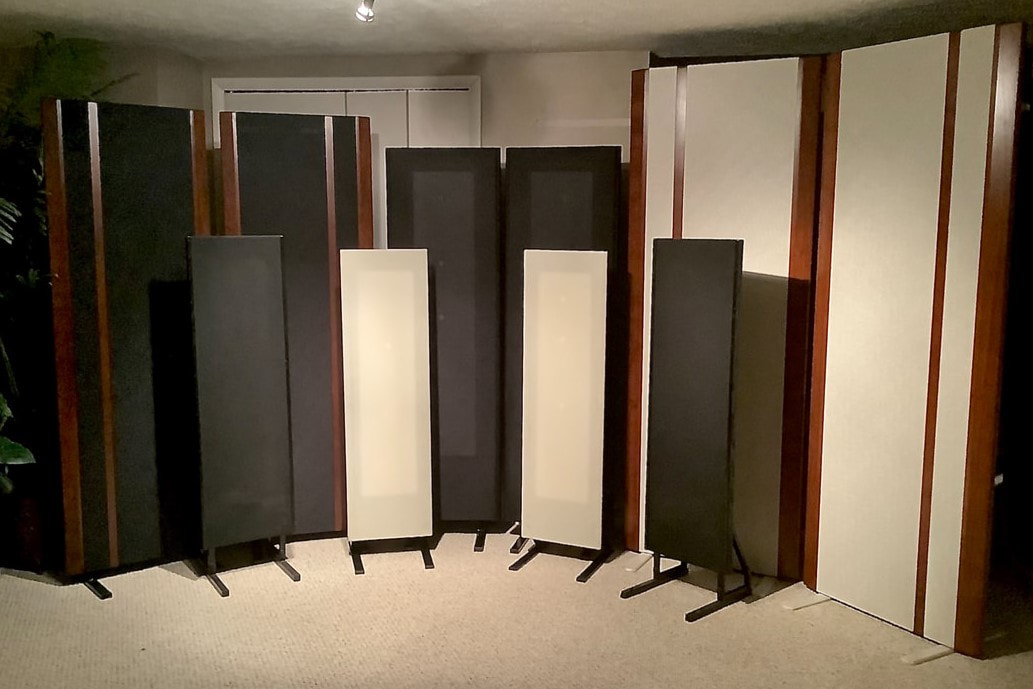
How Are the 20.7s Different from the 20.1s?
I wish I could fully answer that question. Wendell Diller, great host that he was, was almost mum on the physical differences between the 20.7s and their predecessors. Very frustrating, to say the least. All I could get out of him was that they used higher quality capacitors in the crossover and to “listen and you will hear.” But I did learn from Jonathan Valin’s excellent 2012 blog about the 20.7s (highly recommended reading), and also from the folks at Audio Research, that the midrange driver in the 20.7 is new, with half the mass of the quasi-ribbon panel in the 3.7s. That may help explain the more seamless blend between midrange and tweeter, definitely smoother in that respect than the 20.1s. The crossover is also new and, after break-in, seems to be one of the major contributors to the success of the 20.7s.
There are also some physical differences between the 20.7s and its predecessors that are readily apparent to the user. First, Magnepan finally has done away with the bulky and seemingly power-hungry external crossover. The crossover network is now entirely built into the speaker. This makes initial setup much easier. The connections at the rear of the speaker have also changed slightly. In the 20.1s, there is a connector for loudspeaker cable that works best with banana plugs. The 20.1s have a similar connection that can also be used to insert resistor leads for the purpose of slightly attenuating the output of the tweeter. Magnepan does supply resistors for that purpose, although I have achieved very slightly smoother sound by using several high-quality resistors in parallel to achieve the desired value, such as one ohm. Magnepan supplies a thick metal bar to insert in place of a resistor if you choose not to attenuate the tweeter. Again, I have obtained a very slight sonic improvement over this bar by using a high-quality speaker jumper. Since my speaker cables are Audioquest Volcano, I also use Volcano jumpers made for this purpose.
The 20.7s continue with the same connection protocol, except now there is an additional input in which to insert a resistor to attenuate the output of the midrange panel. I tried a resistor in this location for only a short period of time before deciding that midrange attenuation was not the way to go, particularly in light of the substantial output of the bass panel. So I use another Volcano jumper at this location. The last readily observed change to the 20.7s is the elimination of the metal feet at the base of the speaker. In their place is a new oval shaped wooden base, about 1-¼” high, running the full width of the speaker. I think the new base looks more elegant than the metal feet and seems to offer a sturdier mounting surface.
A Breakthrough in Full-Range Planar Music Reproduction
The previous 20.1s have offered world-class midrange and highs, with world-class bass definition and very good but not world-class midbass punch or slam. Many people, including me, would gladly trade an ill-defined boom box for high-definition planar bass. On the other hand, with a flagship speaker, why should we trade anything? The same question applies to dynamic and horn systems costing upper-five through six figures. At that price, why shouldn’t the speakers do everything? They should, but often they don’t. That is why it is relatively common to see very large and expensive dynamic speakers and horn systems being used with (usually very expensive) subwoofers.
The 20.7s offer substantial improvements over the treble and midrange reproduction of the 20.1s, although I am not sure these improvements qualify as “breakthroughs” as such. They are probably more evolutionary in nature. First, the tweeter seems much better integrated with the midrange driver. In the past, it was not uncommon for the ribbon tweeter to “stand out” on its own with some types of music. For me, this necessitated a loading resistor for the tweeter, balancing the value of the resistor between extended and airy highs, on the one hand, with making sure the tweeter did not call attention to itself, on the other. With the 20.7s I have not encountered this issue. At first I installed the resistors out of habit, believing they would be necessary. But the tweeter sounded smooth and open without calling attention to itself, so I removed the attenuation tweeter and replaced it with a speaker jumper. The highs are now even more open than before, but still the tweeter does not seem to call attention to itself. This improvement in integration is a really nice achievement. The attenuation resistors can always be easily installed, with negligible degradation to the sound, if the user still believes there is a little too much treble output in his or her room.
The ribbon tweeter remains a work of art, easily overlooked when one is confronted with a wide array of competing tweeter technologies. With the right source material, it offers unparalleled delicacy of timbre, laser-like focus into the farthest reaches of the stage, and superb air and atmosphere (if on the recording), all without harshness. Furthermore, it will play loudly enough to fully satisfy on music ranging from full orchestral to heavy metal, without distortion. To be fair, it still won’t play quite as loudly as many dome and horn tweeters. But I play rock and roll at very high levels in my medium/large listening room and have not had an issue with the tweeters of the 20.7s distorting, breaking up, or blowing protection fuses. Moreover, this tweeter seems to be able to retrieve innermost detail on a level with the best electrostats.
The 20.7 midrange driver is, in my view, also state-of-the-art in terms of transparency and tonal accuracy, commensurate with the tweeter. It seems somewhat, not a quantum amount, smoother and more coherent than the 20.1s. As already noted, the transition between midrange and tweeter is now more seamless. In listening to an old favorite, “The Ubiquitous Mr. Lovegrove” from the Dead Can Dance Into the Labyrinth LP (4AD), there is a refrain repeated by the vocalist, “I don’t believe you anymore.” As he lowers his voice at the end of the refrain, on the 20.1s his voice would sound ever so slightly thick and discontinuous. Not so on the 20.7s, where he sounds completely natural throughout. On all material auditioned with the 20.7s, acoustic instruments and voices sound remarkably like acoustic instruments and voices heard live. As Jonathan Valin wrote in his blog, the 20.7s will greatly appeal to those who seek “the absolute sound.” Don’t we all? These speakers are superb at conveying the sound of live acoustic instruments in a real performance environment. The instruments and vocalists are not miniaturized, nor are they enlarged. It is very possible that the more direct dispersion patterns of dynamic and horn speakers could lead to a conclusion that more information is being presented, but that appears to me to be a psychoacoustic effect. The same (or more) information is being presented by the Maggie tweeter and midrange (and bass panel), but its slightly more diffuse overall presentation may lead some to erroneously conclude that some information is missing. It’s not.
I would be remiss if I did not here mention what I believe to be one of the greatest advantages of a large line-source speaker: the size and location of the image in the vertical and horizontal planes. Whether the listener is seated or even standing, the orchestra, soloists, band, or singers are presented dimensionally in a way closer to real life than can be achieved by almost any other speaker design, large or small. There is little to no sense of compression in any dimensional plane. Instruments float in space at ear level, even if you are standing. If the source material and your listening room allow, instruments also float in space to the sides and to the rear of the speakers. Small floorstanders simply cannot offer this degree of realism—all too often it seems like you are listening to a miniaturized orchestra or soloist. In my view, even most large dynamic speakers may not be as convincing as the 20.7s in size and space. All too often the large floorstanding speaker, even flagships costing over $100,000, rely primarily on a single dome tweeter facing the listener, sometimes augmented with a rear-firing tweeter to add “ambience.” To me, it often seems that regardless of how large the dynamic speaker may be, the sound seems “beamed” from wherever the dome tweeter or horn tweeter (or midrange) may be located. (I am preparing for the hate letters.) With its tall line-source tweeter and midrange, the 20.7s do not exhibit this “beaming” effect and seem to offer a more uniform and lifelike presentation of instruments and people in real space, regardless of exactly where you may be seated. I am not saying that seating position is unimportant with the 20.7s—it is. To obtain the best staging laterally, there is still a “sweet spot,” although that spot is wide enough to allow for more than one listener. But regardless of where you sit, the tall line source still seems to place lifelike-sized instruments in a close to lifelike-sized vertical and horizontal space. That is an accomplishment and feature not to be undervalued.
While on the subject of the soundstage, the 20.7s will exhibit excellent depth so long as there is adequate open space between the speaker and the front wall. Indeed, for the first time the 20.7s even reproduce sounds and ambience behind the listener, but more about that in a minute. As you move the speakers closer to the wall, the sense of depth will compress. Thus, to get the great reproduction of which the 20.7s are capable, the potential buyer must be willing to commit to placing the speakers properly in the room. To anyone considering the purchase of any large speaker system, dynamic or horn or planar, I do not believe this should be a significant issue. All of them need to be placed somewhat into the room to sound their best. To be sure, the 20.7s will sound excellent in smaller rooms and placed closer to the walls, but to realize their full performance potential they need room to breathe. (Magnepan the company, in its written materials and on its website, is careful not to prescribe any specific rules concerning placement of the speakers or associated equipment, although helpful general guidelines are given.) In my experience with the 20 Series, I believe they need to be placed at least four to five feet in front of the front wall. If room permits, a distance of seven to eight feet would be optimal, but not absolutely essential for enjoyment of the 20.7s.
20.7 ต่างจาก 20.1 อย่างไร
ฉันหวังว่าจะตอบคำถามนั้นได้ครบถ้วน Wendell Diller ซึ่งเป็นพิธีกรที่ยอดเยี่ยม แทบจะไม่พูดอะไรเลยเกี่ยวกับความแตกต่างทางกายภาพระหว่าง 20.7 และรุ่นก่อนหน้า ซึ่งน่าหงุดหงิดมากทีเดียว สิ่งเดียวที่ฉันได้จากเขาคือพวกเขาใช้ตัวเก็บประจุคุณภาพสูงกว่าในครอสโอเวอร์และ “ฟังแล้วคุณจะได้ยิน” แต่ฉันได้เรียนรู้จากบล็อกที่ยอดเยี่ยมของ Jonathan Valin ในปี 2012 เกี่ยวกับ 20.7 (ขอแนะนำให้อ่านอย่างยิ่ง) และจากผู้คนใน Audio Research ว่าไดรเวอร์เสียงกลางใน 20.7 นั้นเป็นแบบใหม่ โดยมีมวลเพียงครึ่งเดียวของแผงกึ่งริบบิ้นใน 3.7 ซึ่งอาจช่วยอธิบายการผสมผสานระหว่างเสียงกลางและทวีตเตอร์ที่ราบรื่นยิ่งขึ้น ซึ่งแน่นอนว่าราบรื่นกว่า 20.1 ในแง่นั้น ครอสโอเวอร์ก็เป็นรถใหม่เช่นกัน และหลังจากการใช้งานจริงแล้ว ดูเหมือนว่าจะเป็นหนึ่งในปัจจัยหลักที่ทำให้ 20.7 ประสบความสำเร็จ
นอกจากนี้ยังมีความแตกต่างทางกายภาพบางอย่างระหว่าง 20.7s และรุ่นก่อนหน้าซึ่งผู้ใช้จะสังเกตเห็นได้ชัดเจน ประการแรก ในที่สุด Magnepan ก็ได้กำจัดครอสโอเวอร์ภายนอกที่เทอะทะและกินไฟมากออกไป เครือข่ายครอสโอเวอร์ถูกสร้างไว้ในลำโพงทั้งหมดแล้ว ทำให้การตั้งค่าเบื้องต้นง่ายขึ้นมาก การเชื่อมต่อที่ด้านหลังของลำโพงก็มีการเปลี่ยนแปลงเล็กน้อยเช่นกัน ใน 20.1s มีขั้วต่อสำหรับสายลำโพงที่ทำงานได้ดีที่สุดกับปลั๊กกล้วย 20.1s มีขั้วต่อที่คล้ายกันซึ่งสามารถใช้เสียบสายตัวต้านทานเพื่อลดทอนเอาต์พุตของทวีตเตอร์เล็กน้อยได้เช่นกัน Magnepan จ่ายตัวต้านทานสำหรับจุดประสงค์นั้น แม้ว่าฉันจะได้เสียงที่นุ่มนวลขึ้นเล็กน้อยโดยใช้ตัวต้านทานคุณภาพสูงหลายตัวขนานกันเพื่อให้ได้ค่าที่ต้องการ เช่น หนึ่งโอห์ม Magnepan จ่ายแท่งโลหะหนาเพื่อใส่แทนตัวต้านทานหากคุณเลือกที่จะไม่ลดทอนทวีตเตอร์ ฉันได้ปรับปรุงคุณภาพเสียงให้ดีขึ้นเล็กน้อยจากการใช้จัมเปอร์ลำโพงคุณภาพสูง เนื่องจากสายลำโพงของฉันเป็น Audioquest Volcano ฉันจึงใช้จัมเปอร์ Volcano ที่ผลิตขึ้นเพื่อจุดประสงค์นี้ด้วย
ลำโพง 20.7 ยังคงใช้โปรโตคอลการเชื่อมต่อแบบเดิม ยกเว้นว่าตอนนี้มีอินพุตเพิ่มเติมสำหรับใส่ตัวต้านทานเพื่อลดทอนเอาต์พุตของแผงเสียงกลาง ฉันลองใช้ตัวต้านทานในตำแหน่งนี้เพียงช่วงระยะเวลาสั้นๆ ก่อนจะตัดสินใจว่าการลดทอนเอาต์พุตของแผงเสียงกลางไม่ใช่ทางออกที่ดี โดยเฉพาะอย่างยิ่งเมื่อคำนึงถึงเอาต์พุตจำนวนมากของแผงเสียงเบส ฉันจึงใช้จัมเปอร์ Volcano อีกตัวในตำแหน่งนี้ การเปลี่ยนแปลงครั้งสุดท้ายที่สังเกตเห็นได้ง่ายของลำโพง 20.7 คือการกำจัดฐานโลหะที่ฐานของลำโพง แทนที่ด้วยฐานไม้ทรงรีใหม่ สูงประมาณ 1-¼ นิ้ว วางตลอดความกว้างของลำโพง ฉันคิดว่าฐานใหม่ดูสง่างามกว่าฐานโลหะและดูเหมือนว่าจะมีพื้นผิวในการติดตั้งที่แข็งแรงกว่า
ความก้าวหน้าครั้งสำคัญในการสร้างเสียงดนตรีแบบแบนราบแบบเต็มช่วง
20.1 รุ่นก่อนหน้าให้เสียงกลางและเสียงสูงระดับโลก พร้อมเสียงเบสที่ชัดใสระดับโลกและเสียงเบสกลางที่หนักแน่นแต่ไม่ถึงกับดีระดับโลก หลายคนรวมทั้งฉันด้วยยินดีจะแลกบูมบ็อกซ์ที่ไม่ค่อยชัดเจนกับเสียงเบสแบนราบความละเอียดสูง ในทางกลับกัน หากเป็นลำโพงเรือธง เหตุใดเราจึงต้องแลกด้วยอะไรก็ตาม คำถามเดียวกันนี้ใช้ได้กับระบบไดนามิกและฮอร์นที่มีราคาตั้งแต่ห้าหลักขึ้นไปถึงหกหลัก ด้วยราคาขนาดนั้น ทำไมลำโพงถึงไม่สามารถทำทุกอย่างได้ ลำโพงควรจะทำได้ แต่บ่อยครั้งที่ลำโพงไม่ทำ นั่นเป็นเหตุผลว่าทำไมจึงพบเห็นลำโพงไดนามิกและระบบฮอร์นขนาดใหญ่และราคาแพงมากใช้ร่วมกับซับวูฟเฟอร์ (ซึ่งโดยปกติจะมีราคาแพงมาก) อยู่บ่อยครั้ง
20.7 นั้นมีการปรับปรุงที่สำคัญเมื่อเทียบกับการสร้างเสียงแหลมและเสียงกลางของ 20.1 แม้ว่าฉันจะไม่แน่ใจว่าการปรับปรุงเหล่านี้เข้าข่ายเป็น “ความก้าวหน้า” หรือไม่ก็ตาม อาจเป็นวิวัฒนาการมากกว่า ประการแรก ทวีตเตอร์ดูเหมือนจะผสานเข้ากับไดรเวอร์เสียงกลางได้ดีขึ้นมาก ในอดีต ไม่ใช่เรื่องแปลกที่ทวีตเตอร์แบบริบบอนจะ “โดดเด่น” ด้วยตัวมันเองกับดนตรีบางประเภท สำหรับฉัน สิ่งนี้จำเป็นต้องใช้ตัวต้านทานโหลดสำหรับทวีตเตอร์ โดยรักษาสมดุลของค่าตัวต้านทานระหว่างเสียงสูงที่ยาวและโปร่งสบาย ในด้านหนึ่ง และตรวจสอบให้แน่ใจว่าทวีตเตอร์ไม่ดึงความสนใจมาที่ตัวมันเอง ในอีกด้านหนึ่ง สำหรับ 20.7 ฉันไม่เคยพบปัญหานี้ ในตอนแรก ฉันติดตั้งตัวต้านทานตามนิสัย โดยเชื่อว่ามันจำเป็น แต่ทวีตเตอร์ให้เสียงที่ราบรื่นและเปิดกว้างโดยไม่ดึงความสนใจมาที่ตัวมันเอง ดังนั้น ฉันจึงถอดทวีตเตอร์ลดทอนเสียงออกและแทนที่ด้วยจัมเปอร์ลำโพง ตอนนี้เสียงสูงเปิดกว้างมากกว่าเดิม แต่ทวีตเตอร์ดูเหมือนจะไม่ดึงดูดความสนใจไปที่ตัวเอง การปรับปรุงการผสานรวมนี้ถือเป็นความสำเร็จที่ยอดเยี่ยม ตัวต้านทานลดทอนสามารถติดตั้งได้ง่ายเสมอ โดยไม่ทำให้คุณภาพเสียงลดลงเลย หากผู้ใช้ยังเชื่อว่ามีเอาต์พุตเสียงแหลมมากเกินไปในห้องของตน
ทวีตเตอร์แบบริบบอนยังคงเป็นงานศิลปะที่มองข้ามได้ง่ายเมื่อต้องเผชิญกับเทคโนโลยีทวีตเตอร์ที่หลากหลายและแข่งขันกัน ด้วยแหล่งข้อมูลที่เหมาะสม ทวีตเตอร์นี้ให้เสียงที่ละเอียดอ่อนที่ไม่มีใครเทียบได้ โฟกัสที่ระยะที่ไกลที่สุดของเวทีได้อย่างแม่นยำ และบรรยากาศและอากาศที่ยอดเยี่ยม (หากอยู่ในการบันทึก) ทั้งหมดนี้ไม่มีความหยาบกระด้าง ยิ่งไปกว่านั้น ทวีตเตอร์จะเล่นเสียงดังพอที่จะตอบสนองเพลงได้อย่างเต็มที่ตั้งแต่ออร์เคสตราเต็มรูปแบบไปจนถึงเฮฟวีเมทัลโดยไม่เกิดการบิดเบือน หากจะให้ยุติธรรม ทวีตเตอร์จะยังคงไม่ดังเท่าทวีตเตอร์แบบโดมและฮอร์นหลายๆ ตัว แต่ฉันเล่นร็อคแอนด์โรลในระดับเสียงสูงมากในห้องฟังขนาดกลาง/ใหญ่ของฉัน และไม่พบปัญหาทวีตเตอร์ของ 20.7 ที่บิดเบือน แตก หรือฟิวส์ป้องกันระเบิด ยิ่งไปกว่านั้น ทวีตเตอร์นี้ดูเหมือนจะสามารถดึงรายละเอียดภายในสุดออกมาได้ในระดับที่มีอิเล็กโทรสแตทที่ดีที่สุด
ในความเห็นของฉัน ไดรเวอร์เสียงกลาง 20.7 ถือเป็นเทคโนโลยีขั้นสูงในแง่ของความโปร่งใสและความแม่นยำของโทนเสียง ซึ่งสมดุลกับทวีตเตอร์ ดูเหมือนว่าจะไม่มากเท่าควอนตัม แต่มีความนุ่มนวลและสอดคล้องกันมากกว่าไดรเวอร์ 20.1 ดังที่กล่าวไปแล้ว การเปลี่ยนผ่านระหว่างเสียงกลางและทวีตเตอร์นั้นราบรื่นกว่ามาก จากการฟังเพลงโปรดเก่าๆ ของเขา “The Ubiquitous Mr. Lovegrove” จากอัลบั้ม Dead Can Dance Into the Labyrinth (4AD) นักร้องจะร้องซ้ำประโยคเดิมว่า “ฉันไม่เชื่อคุณอีกต่อไปแล้ว” เมื่อเขาลดเสียงลงในตอนท้ายของประโยคเดิม ในไดรเวอร์ 20.1 เสียงของเขาจะฟังดูหนาและไม่ต่อเนื่องเล็กน้อย แต่ในไดรเวอร์ 20.7 นั้นไม่เป็นเช่นนั้น เพราะไดรเวอร์ 20.7 ฟังดูเป็นธรรมชาติอย่างสมบูรณ์ตลอดทั้งเพลง ในเนื้อหาทั้งหมดที่ทดสอบด้วยไดรเวอร์ 20.7 เครื่องดนตรีอะคูสติกและเสียงร้องจะฟังดูคล้ายกับเครื่องดนตรีอะคูสติกและเสียงร้องที่ได้ยินในการแสดงสดอย่างน่าทึ่ง อย่างที่ Jonathan Valin เขียนไว้ในบล็อกของเขา ลำโพงรุ่น 20.7 จะดึงดูดผู้ที่แสวงหา “เสียงที่สมบูรณ์แบบ” ได้เป็นอย่างดี เราทุกคนต่างก็ชอบใช่ไหม ลำโพงรุ่นนี้ถ่ายทอดเสียงเครื่องดนตรีอะคูสติกสดในสภาพแวดล้อมการแสดงจริงได้อย่างยอดเยี่ยม เครื่องดนตรีและนักร้องไม่ได้มีขนาดเล็กลงหรือใหญ่ขึ้นเลย เป็นไปได้มากที่รูปแบบการกระจายเสียงโดยตรงของลำโพงไดนามิกและฮอร์นอาจทำให้สรุปได้ว่ามีการนำเสนอข้อมูลมากขึ้น แต่สำหรับฉันแล้ว นั่นอาจเป็นผลทางจิตวิเคราะห์ก็ได้ ข้อมูลเดียวกัน (หรือมากกว่า) ถูกนำเสนอโดยทวีตเตอร์ Maggie และแผงเสียงกลาง (และแผงเสียงเบส) แต่การนำเสนอโดยรวมที่กระจัดกระจายมากขึ้นเล็กน้อยอาจทำให้บางคนสรุปผิดๆ ได้ว่ามีข้อมูลบางส่วนที่ขาดหายไป ซึ่งไม่เป็นความจริง
ฉันจะละเลยหน้าที่หากไม่ได้กล่าวถึงข้อดีอย่างหนึ่งที่ฉันเชื่อว่าเป็นข้อได้เปรียบที่ยิ่งใหญ่ที่สุดของลำโพงแบบไลน์ซอร์สขนาดใหญ่ที่นี่: ขนาดและตำแหน่งของภาพในระนาบแนวตั้งและแนวนอน ไม่ว่าผู้ฟังจะนั่งหรือยืน วงออร์เคสตรา นักร้องเดี่ยว วงดนตรี หรือนักร้องจะถูกนำเสนอในมิติที่ใกล้เคียงกับชีวิตจริงมากกว่าที่ลำโพงแบบอื่นๆ เกือบทั้งหมดจะทำได้ ไม่ว่าจะใหญ่หรือเล็ก แทบไม่มีความรู้สึกถูกบีบอัดในระนาบมิติใดๆ เครื่องดนตรีลอยอยู่ในอวกาศที่ระดับหู แม้ว่าคุณจะยืนอยู่ก็ตาม หากวัสดุต้นทางและห้องฟังของคุณอนุญาต เครื่องดนตรีก็จะลอยอยู่ในอวกาศไปทางด้านข้างและด้านหลังของลำโพง ลำโพงตั้งพื้นขนาดเล็กไม่สามารถให้ความสมจริงในระดับนี้ได้ บ่อยครั้งเกินไปที่ดูเหมือนว่าคุณกำลังฟังวงออร์เคสตราขนาดเล็กหรือศิลปินเดี่ยว ในความคิดของฉัน แม้แต่ลำโพงไดนามิกขนาดใหญ่ส่วนใหญ่ก็อาจไม่น่าเชื่อถือเท่ากับลำโพง 20.7 ในด้านขนาดและพื้นที่ บ่อยครั้งลำโพงตั้งพื้นขนาดใหญ่ แม้แต่รุ่นเรือธงที่ราคาเกิน 100,000 ดอลลาร์ ก็ยังต้องพึ่งพาทวีตเตอร์โดมตัวเดียวที่หันไปทางผู้ฟังเป็นหลัก บางครั้งอาจเสริมด้วยทวีตเตอร์แบบยิงด้านหลังเพื่อเพิ่ม “บรรยากาศ” สำหรับฉัน ดูเหมือนว่าไม่ว่าลำโพงไดนามิกจะมีขนาดใหญ่แค่ไหน เสียงก็ดูเหมือนจะ “แผ่” ออกมาจากทุกที่ที่มีทวีตเตอร์โดมหรือทวีตเตอร์ฮอร์น (หรือเสียงกลาง) อยู่ (ฉันกำลังเตรียมรับมือกับจดหมายแสดงความเกลียดชัง) ด้วยทวีตเตอร์ไลน์ซอร์สที่สูงและเสียงกลาง ลำโพง 20.7 จึงไม่แสดงเอฟเฟกต์ “แผ่” นี้ และดูเหมือนจะให้การนำเสนอเครื่องดนตรีและผู้คนในพื้นที่จริงที่สม่ำเสมอและสมจริงยิ่งขึ้น ไม่ว่าคุณจะนั่งตรงไหนก็ตาม ฉันไม่ได้บอกว่าตำแหน่งที่นั่งไม่สำคัญสำหรับลำโพง 20.7 แต่มันสำคัญ เพื่อให้ได้การจัดวางในแนวขวางที่ดีที่สุด ยังคงมี “จุดที่เหมาะสม” แม้ว่าจุดนั้นจะกว้างพอที่จะให้ผู้ฟังมากกว่าหนึ่งคนฟังก็ตาม แต่ไม่ว่าคุณจะนั่งตรงไหน แหล่งที่มาของสายสูงยังคงดูเหมือนว่าจะวางเครื่องดนตรีขนาดเท่าจริงในพื้นที่แนวตั้งและแนวนอนที่มีขนาดใกล้เคียงกับขนาดจริง นับเป็นความสำเร็จและคุณสมบัติที่ไม่ควรมองข้าม
เมื่อพูดถึงเรื่องของเวทีเสียง ลำโพง 20.7 จะแสดงความลึกที่ยอดเยี่ยมตราบเท่าที่มีพื้นที่เปิดโล่งเพียงพอระหว่างลำโพงและผนังด้านหน้า แท้จริงแล้ว เป็นครั้งแรกที่ลำโพง 20.7 สร้างเสียงและบรรยากาศด้านหลังผู้ฟังได้ แต่เราจะพูดถึงเรื่องนี้ในอีกไม่กี่นาที เมื่อคุณย้ายลำโพงเข้าใกล้ผนังมากขึ้น ความรู้สึกถึงความลึกจะถูกบีบอัด ดังนั้น เพื่อให้ได้เสียงที่ยอดเยี่ยมซึ่งลำโพง 20.7 สามารถทำได้ ผู้ซื้อที่มีศักยภาพจะต้องเต็มใจที่จะวางลำโพงอย่างเหมาะสมในห้อง สำหรับใครก็ตามที่กำลังพิจารณาซื้อระบบลำโพงขนาดใหญ่ ไม่ว่าจะเป็นไดนามิก ฮอร์น หรือพลานาร์ ฉันไม่เชื่อว่านี่จะเป็นปัญหาสำคัญ ลำโพงทั้งหมดต้องวางในห้องในระดับหนึ่งเพื่อให้ได้เสียงที่ดีที่สุด แน่นอนว่าลำโพง 20.7 จะให้เสียงที่ยอดเยี่ยมในห้องขนาดเล็กและวางไว้ใกล้กับผนังมากขึ้น แต่เพื่อให้บรรลุศักยภาพในการทำงานอย่างเต็มที่ ลำโพงจำเป็นต้องมีพื้นที่ว่างให้หายใจ (บริษัท Magnepan ได้ระบุข้อกำหนดเฉพาะเกี่ยวกับการวางลำโพงหรืออุปกรณ์ที่เกี่ยวข้องไว้ในเอกสารและเว็บไซต์ของบริษัท แม้ว่าจะมีแนวทางทั่วไปที่เป็นประโยชน์ก็ตาม) จากประสบการณ์ของฉันกับ 20 Series ฉันเชื่อว่าควรวางลำโพงห่างจากผนังด้านหน้าอย่างน้อย 4 ถึง 5 ฟุต หากมีพื้นที่เพียงพอ ระยะห่าง 7 ถึง 8 ฟุตจะเหมาะสมที่สุด แต่ไม่จำเป็นอย่างยิ่งสำหรับการใช้งาน 20.7
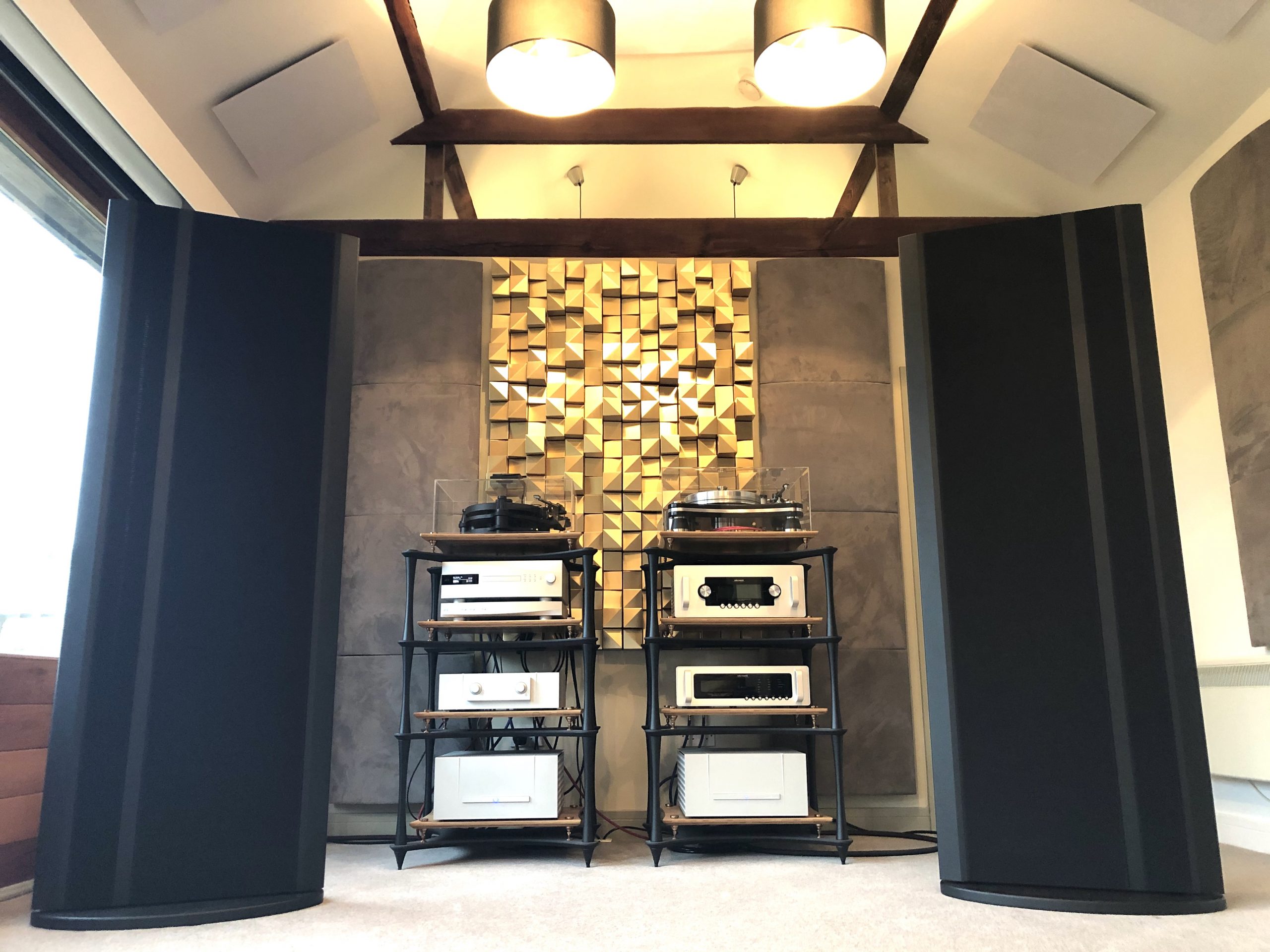
As noted, another apparent improvement of the 20.7s over the 20.1s is in the linearity of phase response. With the 20.1s, on some material I would experience the sound wrapping somewhat around the sidewalls between myself and the speakers. But with the 20.7s, for the first time I hear sounds and possibly out-of-phase effects wrap not just around the entire wall, but also behind my head as well. I have heard this effect at some of my friends’ homes with very phase-accurate speakers, but I have not heard much of it before on the 20s. It substantially adds to the sense of air and space and helps the speakers disappear. For example, on the song “Climbatize” from the killer Prodigy LP Fat of the Land [XL], there is a whooshing sound at the beginning and interspersed throughout that, in the past, seemed to emanate from about the middle of the right sidewall. With the 20.7s, that sound now starts way behind me, seemingly from the middle of the rear wall. Now there are also holographic sound effects on the left side that I simply never heard before. At the end of the song there appears to be a shaker instrument of some type that previously seemed pretty holographic in the front half of my room. Now the sounds from the shaker tail off behind me, off the rear wall. I have had the same experience with a number of LPs and CDs—i.e., hearing holographic effects I did not know were there. Very cool stuff.
While the improvements discussed above are substantial and beneficial, where is this so-called “breakthrough” I have been trumpeting? It’s in the midbass and bass of the 20.7s. For many of you who have owned or listened extensively to full-range planars in the past, it may be safe to say that, while you admired the bass, you still were left wanting to some extent. You may have wanted more of the “slam” offered by good dynamic drivers. Or you may have wanted the woofer to plumb greater depths. Or you may have wanted both. I recall at New York audio shows in years past, even Magnepan demonstrated the 20s or 20.1s with cone subwoofers, not with great results. There was too much overlap between the Maggie bass and the subwoofers, leading to a muddy and ill-defined low end. Most owners of large planars that I have spoken with, whether those speakers be planar-magnetics or electrostatic, have wished for greater bass slam and extension while retaining all the high-definition “goodness” of their speakers. Many have tried and continue to use subwoofers, with varying amounts of success. Others refuse to use subwoofers out of concern for damaging the coherent and well-integrated bass already offered by their speaker.
But, with certain conditions being met, the midbass and bass of the 20.7s is so satisfying that I don’t think the thoughts “lack of slam” or “needs a subwoofer” will come to anyone, even on a subliminal level. This is the first large full-range planar I have heard that is fully convincing on orchestral bass, timpani, rock bass guitar and drum kits. On great orchestral material, you feel the full weight of the orchestra and are transported to enough of the recording space to lose sense of the dimensions of your room. On rock, electronic and dance music, you want to. . . . get up and dance (for me, if nobody is watching)! Isn’t this what the high end is supposed to be? In my view, if the bass isn’t right or close to right, the presentation is more polite and you lose many of these sensations.
But there’s always something, and the exemplary bass performance of which the 20.7s are capable does not come all that easily. I have written several versions of this section over the past few months and I have had to throw them all away. The ribbon tweeter and quasi-ribbon midrange sound really good “right out of the box” and only improve as time goes on. But the bass panel is a different story. When I first connected these speakers to the same equipment I have been using for quite a while on my 20.1s, I thought the bass was almost unlistenable. In fact, I could not understand why Magnepan released a speaker that sounded like this. The midbass was boomy, somewhat heavy and lacked control. There was low bass, but it too was boomy and various frequencies sounded distressingly like the same note.
But I learned that the key with this speaker is perseverance and patience, a lot of patience. Simply put, these speakers require substantial break-in and certain types of electronics seem to offer better results than others. No warning as to necessary break-in is offered by Magnepan in the somewhat sparse owner’s manual, but it should be. As I continued to play music, I could observe that the bass quality and quantity were changing, if not on a daily basis, then at least a weekly basis. Recordings that sounded unacceptable in the bass a week or two earlier, gradually started to sound tighter and more controlled, if not yet where I thought they should be. The speakers continued on their upward-sloping odyssey of improvement in this regard. I was not sure what awaited at the top of the slope, if indeed I could be certain I was at the top.
My reference amplifiers, VTL 750s, have always been a good match for the large Maggies. More than enough clean power, great sense of space and ease in presentation. Even though I continued to hear the bass response of the speakers improve over the course of the first 80–100 hours of listening (and I also played the speakers when I was out of the house), I started to wonder if an all-tube amp was the best choice for this bass panel. The midrange and highs were wonderful, but the bass was not yet in their league. Maggies have always sounded great on tube gear, indeed it is one of their strengths, but I thought experimentation might be in order for the 20.7s. I also thought it very possible, if not likely, that these speakers were developed using solid-state amps. But I am a tube aficionado and did not want to completely abandon the sound of tubes. What to do? I called Jim White of Aesthetix Audio, who was kind enough to loan me a pair of his Atlas Signature monoblock amplifiers. These hybrid amps feature a solid-state output with a tube input. They seem to offer damping and control similar to a purely solid-state amp and a lot of power—rated 300 watts into eight ohms and 600 watts into the four ohm load presented by the Maggies.
With the Atlas Signatures in the system, the midbass and bass immediately sounded more controlled and coherent. These amps seem to offer a better grip on the bass panels than the VTLs, although other all-tube amps may offer different results with these speakers. I did put the VTLs back in the system a few times as the speakers continued to break in—the bass continued to substantially improve and ultimately became quite acceptable, but never quite to the point of the Atlas. Sure, the presentation of the Atlas in the midrange and highs was not quite as “tube-like” as the VTLs, for better and worse, but the Atlas sounds more tube-like than not and seems to offer most of the benefit of tubes with the control and slam of good solid-state. Not a bad trade-off and, in my system, it sounds stellar. Moreover, the Atlas Signature monos are in a price range ($16,000 per pair) consonant with the purchase of the 20.7s, and the 750s are no longer being made. Most of the newer, high-powered all-tube amps are more expensive than the Atlas. Less powerful all-tube amps, especially newer designs with improved components, may be very satisfactory with the 20.7s as well. Experimentation is the key.
ดังที่กล่าวไว้ การปรับปรุงที่ชัดเจนอีกประการหนึ่งของรุ่น 20.7 เมื่อเทียบกับรุ่น 20.1 อยู่ที่การตอบสนองแบบเส้นตรงของเฟส สำหรับรุ่น 20.1 นั้น ฉันจะสัมผัสได้ถึงเสียงที่ห่อหุ้มผนังด้านข้างระหว่างตัวฉันกับลำโพง แต่สำหรับรุ่น 20.7 นี้ เป็นครั้งแรกที่ฉันได้ยินเสียงและเอฟเฟกต์ที่ไม่อยู่ในเฟสห่อหุ้มไม่เพียงแค่รอบผนังทั้งหมดเท่านั้น แต่ยังรวมถึงด้านหลังศีรษะของฉันด้วย ฉันเคยได้ยินเอฟเฟกต์นี้ที่บ้านของเพื่อนๆ บางคนด้วยลำโพงที่มีเฟสที่แม่นยำมาก แต่ฉันไม่เคยได้ยินมาก่อนในรุ่น 20.7 มันช่วยเพิ่มความรู้สึกถึงอากาศและพื้นที่ได้อย่างมาก และช่วยให้ลำโพงหายไป ตัวอย่างเช่น ในเพลง “Climbatize” จากอัลบั้มFat of the Land [XL] ของวง Prodigy สุดโหด มีเสียงวูบวาบในตอนต้นและแทรกอยู่ตลอดเวลา ซึ่งในอดีตนั้นดูเหมือนว่าจะแผ่ออกมาจากบริเวณตรงกลางของผนังด้านข้างด้านขวา เมื่อใช้ความเร็ว 20.7 วินาที เสียงนั้นเริ่มดังมาจากด้านหลังฉันไกลมาก ดูเหมือนว่าจะมาจากตรงกลางของผนังด้านหลัง ตอนนี้ยังมีเอฟเฟกต์เสียงโฮโลแกรมทางด้านซ้ายที่ฉันไม่เคยได้ยินมาก่อน ในช่วงท้ายของเพลง ดูเหมือนว่าจะมีเครื่องดนตรีประเภทเชคเกอร์ซึ่งก่อนหน้านี้ดูเหมือนจะเป็นโฮโลแกรมในครึ่งด้านหน้าของห้องของฉัน ตอนนี้ เสียงจากหางเชคเกอร์ที่อยู่ด้านหลังฉัน จากผนังด้านหลัง ฉันมีประสบการณ์แบบเดียวกันนี้กับแผ่นเสียงและซีดีหลายแผ่น นั่นคือ ได้ยินเอฟเฟกต์โฮโลแกรมที่ฉันไม่รู้ว่ามีอยู่ด้วย เป็นอะไรที่เจ๋งมาก
แม้ว่าการปรับปรุงที่กล่าวถึงข้างต้นจะมีความสำคัญและเป็นประโยชน์ แต่ “ความก้าวหน้า” ที่ฉันพูดถึงนี้หายไปไหน มันอยู่ที่เสียงเบสกลางและเบสของ 20.7 สำหรับหลายๆ คนที่เคยเป็นเจ้าของหรือฟังลำโพงแบบแบนด์วิดธ์แบบเต็มย่านความถี่มาบ้างแล้ว อาจจะพูดได้อย่างปลอดภัยว่า แม้ว่าคุณจะชื่นชอบเสียงเบส แต่คุณก็ยังต้องการบางอย่างอยู่ดี คุณอาจต้องการ “เสียงหนักแน่น” มากกว่านี้จากไดรเวอร์ไดนามิกที่ดี หรือคุณอาจต้องการให้วูฟเฟอร์เจาะลึกได้มากกว่านี้ หรือคุณอาจต้องการทั้งสองอย่าง ฉันจำได้ว่าในงานแสดงเครื่องเสียงที่นิวยอร์กเมื่อหลายปีก่อน แม้แต่ Magnepan ก็ยังสาธิตลำโพง 20 หรือ 20.1 กับซับวูฟเฟอร์แบบกรวย แต่ก็ไม่ได้ผลดีนัก มีการเหลื่อมซ้อนกันมากเกินไประหว่างเบส Maggie และซับวูฟเฟอร์ ทำให้ได้เสียงเบสที่ขุ่นมัวและไม่ชัดเจน เจ้าของลำโพงแบบ Planar ขนาดใหญ่ส่วนใหญ่ที่ผมได้พูดคุยด้วย ไม่ว่าจะเป็นลำโพงแบบ Planar Magnetic หรือ Electrostatic ต่างก็ต้องการเสียงเบสที่หนักแน่นและยาวขึ้น ในขณะที่ยังคงรักษา “ความดี” ของลำโพงแบบ High Definition เอาไว้ หลายๆ คนเคยลองใช้ซับวูฟเฟอร์และยังคงใช้ต่อไป โดยประสบความสำเร็จในระดับหนึ่ง ในขณะที่บางคนปฏิเสธที่จะใช้ซับวูฟเฟอร์เพราะกังวลว่าเสียงเบสที่สอดประสานกันและผสานกันได้ดีซึ่งลำโพงของพวกเขามีอยู่แล้วจะเสียหาย
แต่เมื่อผ่านเงื่อนไขบางประการ เสียงกลางและเบสของ 20.7 ก็ให้ความพึงพอใจมากจนผมไม่คิดว่าจะมีใครคิดว่า “ไม่มีเสียงแหลม” หรือ “ต้องมีซับวูฟเฟอร์” แม้แต่ในระดับจิตใต้สำนึก นี่คือเสียงแบนราบแบบฟูลเรนจ์ขนาดใหญ่ครั้งแรกที่ผมได้ยินซึ่งให้เสียงที่น่าเชื่อถือได้อย่างเต็มที่บนเบสออเคสตรา ทิมปานี กีตาร์เบสร็อค และชุดกลอง บนวัสดุออเคสตราที่ดี คุณจะรู้สึกถึงน้ำหนักทั้งหมดของออเคสตราและถูกเคลื่อนย้ายไปยังพื้นที่บันทึกเสียงเพียงพอที่จะทำให้สูญเสียความรู้สึกถึงขนาดของห้องของคุณ บนดนตรีร็อค อิเล็กทรอนิกส์ และแดนซ์ คุณอยากจะ… ลุกขึ้นและเต้น (สำหรับผม ถ้าไม่มีใครดูอยู่)! นี่ไม่ใช่สิ่งที่ไฮเอนด์ควรจะเป็นหรือ ในความคิดของผม หากเบสไม่ถูกต้องหรือใกล้เคียงถูกต้อง การนำเสนอจะสุภาพกว่าและคุณจะสูญเสียความรู้สึกเหล่านี้ไปมาก
แต่ก็ยังมีบางอย่างอยู่เสมอ และประสิทธิภาพเสียงเบสที่ยอดเยี่ยมซึ่งลำโพง 20.7 สามารถทำได้นั้นไม่ใช่เรื่องง่ายเลย ฉันได้เขียนส่วนนี้หลายเวอร์ชันในช่วงไม่กี่เดือนที่ผ่านมา และฉันต้องทิ้งมันไปทั้งหมด ทวีตเตอร์ริบบอนและมิดเรนจ์กึ่งริบบอนนั้นให้เสียงที่ดีจริงๆ “ทันทีที่แกะกล่อง” และจะดีขึ้นเรื่อยๆ เมื่อเวลาผ่านไป แต่แผงเบสนั้นเป็นเรื่องอื่น เมื่อฉันเชื่อมต่อลำโพงเหล่านี้กับอุปกรณ์เดียวกันที่ฉันใช้มาสักระยะหนึ่งในลำโพง 20.1 ของฉันเป็นครั้งแรก ฉันคิดว่าเบสแทบจะฟังไม่ได้เลย จริงๆ แล้ว ฉันไม่เข้าใจว่าทำไม Magnepan ถึงออกลำโพงที่ให้เสียงแบบนี้ เสียงกลางเบสดังกึกก้อง หนักพอสมควร และขาดการควบคุม มีเบสต่ำแต่ก็ดังกึกก้องเช่นกัน และความถี่ต่างๆ ก็ฟังดูน่ารำคาญเหมือนโน้ตเดียวกัน
แต่ฉันได้เรียนรู้ว่ากุญแจสำคัญของลำโพงรุ่นนี้คือความพากเพียรและความอดทน ความอดทนอย่างมากพูดง่ายๆ ก็คือ ลำโพงเหล่านี้ต้องการการรันอินอย่างยาวนาน และอุปกรณ์อิเล็กทรอนิกส์บางประเภทก็ดูเหมือนจะให้ผลลัพธ์ที่ดีกว่าประเภทอื่นๆ Magnepan ไม่ได้ให้คำเตือนว่าจำเป็นต้องรันอินหรือไม่ในคู่มือของเจ้าของที่ค่อนข้างสั้น แต่ควรจะเป็นอย่างนั้น ขณะที่ฉันเล่นเพลงต่อไป ฉันสังเกตเห็นว่าคุณภาพและปริมาณของเสียงเบสเปลี่ยนไป ถ้าไม่ใช่ทุกวัน ก็อย่างน้อยก็ทุกสัปดาห์ การบันทึกเสียงที่เสียงเบสฟังดูไม่เป็นที่ยอมรับเมื่อหนึ่งหรือสองสัปดาห์ก่อนนั้น ค่อยๆ เริ่มฟังดูแน่นขึ้นและควบคุมได้ดีขึ้น แม้ว่าจะยังไม่ถึงระดับที่ฉันคิดว่าควรจะเป็นก็ตาม ลำโพงยังคงเดินหน้าปรับปรุงในเรื่องนี้ต่อไป ฉันไม่แน่ใจว่าจะเกิดอะไรขึ้นบนจุดสูงสุดของความลาดชันนี้ แต่ฉันแน่ใจจริงๆ ว่าฉันอยู่บนจุดสูงสุดแล้ว
เครื่องขยายเสียงอ้างอิงของฉัน VTL 750s เหมาะกับ Maggies ขนาดใหญ่มาโดยตลอด เนื่องจากมีกำลังขับที่สะอาดเพียงพอ มีพื้นที่กว้างขวาง และนำเสนอได้ง่าย แม้ว่าฉันจะได้ยินเสียงเบสที่ตอบสนองดีขึ้นจากลำโพงตลอด 80–100 ชั่วโมงแรกที่ฟัง (และฉันยังเล่นลำโพงเมื่ออยู่นอกบ้านด้วย) แต่ฉันก็เริ่มสงสัยว่าเครื่องขยายเสียงแบบหลอดล้วนจะเป็นตัวเลือกที่ดีที่สุดสำหรับแผงเสียงเบสนี้หรือไม่ เสียงกลางและสูงนั้นยอดเยี่ยมมาก แต่เสียงเบสยังไม่ถึงระดับนั้น Maggies ให้เสียงที่ดีบนอุปกรณ์หลอดมาโดยตลอด ซึ่งถือเป็นจุดแข็งอย่างหนึ่งของ Maggies แต่ฉันคิดว่าการทดลองกับ 20.7s อาจเป็นทางเลือกที่ดี นอกจากนี้ ฉันยังคิดว่าลำโพงเหล่านี้ได้รับการพัฒนาโดยใช้เครื่องขยายเสียงแบบโซลิดสเตตได้มากทีเดียว แต่ฉันเป็นผู้ชื่นชอบหลอดและไม่ต้องการละทิ้งเสียงของหลอดโดยสิ้นเชิง จะทำอย่างไรดี? ฉันโทรหาจิม ไวท์แห่ง Aesthetix Audio ซึ่งใจดีพอที่จะยืมเครื่องขยายเสียงโมโนบล็อก Atlas Signature ของเขาให้ฉันหนึ่งคู่ เครื่องขยายเสียงไฮบริดเหล่านี้มีเอาต์พุตแบบโซลิดสเตตพร้อมอินพุตแบบหลอด ดูเหมือนว่าจะให้การหน่วงและการควบคุมที่คล้ายกับเครื่องขยายเสียงแบบโซลิดสเตตล้วนๆ และมีพลังมาก โดยมีพิกัด 300 วัตต์ที่ 8 โอห์มและ 600 วัตต์ที่โหลด 4 โอห์มที่ Maggies นำเสนอ
เมื่อใช้ Atlas Signature ในระบบ เสียงกลางเบสและเสียงเบสจะฟังดูควบคุมได้ดีขึ้นและมีความสอดคล้องกันมากขึ้นทันที แอมป์เหล่านี้ดูเหมือนจะจับแผงเบสได้ดีกว่า VTL แม้ว่าแอมป์หลอดทั้งหมดตัวอื่นอาจให้ผลลัพธ์ที่แตกต่างกันเมื่อใช้ลำโพงเหล่านี้ ฉันใส่ VTL กลับเข้าไปในระบบหลายครั้งในขณะที่ลำโพงทำงานต่อไป เสียงเบสดีขึ้นอย่างต่อเนื่องและในที่สุดก็เป็นที่ยอมรับได้ แต่ก็ไม่ถึงขั้นของ Atlas แน่นอน การนำเสนอของ Atlas ในระดับกลางและสูงไม่ได้ “เหมือนหลอด” เท่ากับ VTL ทั้งดีและแย่ แต่ Atlas ให้เสียงเหมือนหลอดมากกว่าและดูเหมือนว่าจะให้ประโยชน์ส่วนใหญ่ของหลอดด้วยการควบคุมและแรงกระแทกของโซลิดสเตตที่ดี ไม่ใช่การแลกเปลี่ยนที่แย่และในระบบของฉัน มันฟังดูยอดเยี่ยมมาก นอกจากนี้ โมโน Atlas Signature อยู่ในช่วงราคา (16,000 ดอลลาร์ต่อคู่) ซึ่งสอดคล้องกับการซื้อ 20.7 และ 750 ก็ไม่มีการผลิตอีกต่อไปแล้ว แอมป์หลอดทั้งหมดรุ่นใหม่ที่มีกำลังขับสูงส่วนใหญ่มีราคาแพงกว่า Atlas แอมป์หลอดทั้งหมดที่มีกำลังขับน้อยกว่า โดยเฉพาะดีไซน์ใหม่ที่มีส่วนประกอบที่ได้รับการปรับปรุง อาจให้ความพึงพอใจกับ 20.7 ได้เช่นกัน การทดลองคือสิ่งสำคัญ


Almost all reviews of larger Magneplanars mention that the speakers need power. You will not read differently here. On the 20 Series I have had good luck in the past with tube and solid-state amplifiers in the 300-watt range, or larger. The speakers are relatively low in sensitivity although they do not appear to provide a difficult load for the amplifiers, at least for the amplifiers I have had available. Smaller amplifiers will certainly drive the speaker, but will probably not be adequate if you like to listen to large-scale music at levels approaching realism. Because these speakers are truly full-range and will reveal even subtle changes in the equipment chain, I believe it is safe to say that no amplifier is “too good” for the 20.7s. It should be noted, as Jonathan Valin pointed out in his blog, the Maggies still seem to need a little kick in volume before they really come alive and exhibit their best dynamics. And yes, the dynamic range of the 20.7 at full tilt is awesome, unprecedented in my view for a planar, but still not quite as wide-ranging as the largest dynamic and horn systems.
With the newly found transparency, coherence, and bass slam of the 20.7s, I also find them to be much more enjoyable at lower listening levels than the 20.1s. Still, the dynamic contrasts at low listening levels do not seem quite as pronounced as with a good cone or horn system. At the other end of the spectrum, I agree in general with Jonathan Valin’s conclusion that at higher listening levels you may not get all of bass weight and slam offered by larger cone woofers. Nevertheless, in my slightly larger listening room I find the bass output and quality of the 20.7s to be revelatory for a planar and very competitive with most large dynamic systems.
I cannot explain why it takes so long for the bass panels on the 20.7s to break in. I can speculate that it may be a function of the new capacitors being used in the crossover, or the initial tightness of the bass panel itself, or a combination thereof. At the present, with well over 200 hours on the speakers, I believe they are fully broken in. The end result: highly defined midbass and bass with no sense of boxiness or boom. Cellos and doublebasses seem real, with an in-the-room reality that is stunning. Bass drums and timpanis rumble and roll throughout the room, as in an orchestral hall. There’s more. The midbass has a degree of slam simply not heard before on a full-planar design. The kickdrum has real kick. Honestly, in my room it sounds as if Magnepan has somehow stuffed one or two very high quality 15″ bass drivers into the cabinet, only with better definition. This is not hyperbole. If you have the opportunity or make the opportunity to hear a fully broken-in set of 20.7s, you will see and hear for yourself.
Of course, this bass reproduction still may not satisfy everyone. In my room, I seem to have substantial output to at least 25Hz. While I do not really feel that anything is missing, I have some recordings that contain information below 25Hz. I am aware that these speakers are not quite retrieving the very lowest organ fundamentals or lowest synthesizer notes, but in truth the 20.7s’ reproduction of organ and synth are still exemplary. I confess I do not listen to organ recordings that frequently and if you are an organ aficionado, these may not be the best choice in speakers for you. In addition, while the 20.7s are capable of an extraordinary amount of “slam,” it is not quite the same as slam produced by cones. The 20.7s certainly exhibit tighter and more transparent bass than most dynamic speakers, but I believe that as the frequencies go below about 50Hz, well-designed cone subwoofers may offer a slightly greater degree of control, punch, and certainly greater extension. Yet the bass from the 20.7s is so satisfying overall, I would not think of attempting to mate a subwoofer to these speakers. One of the goals of adding good subwoofers is to obtain a larger sense of the space of the venue. The bass of the 20.7s is certainly more than adequate to accomplish most-to-all of that goal, without the need for subwoofers.
So when you put this ribbon tweeter and quasi-ribbon midrange and (fully-broken-in) quasi-ribbon bass panel all together, how do they sound? In a word, transcendent. The speakers are physically quite large but the extent to which they sonically disappear is amazing. For example, on really good orchestral recordings (see below), the sound is laid out in the middle of the speakers, behind the speakers, on the speakers, in front of the speakers, to the sides of the speakers, and even sometimes behind the seated listener. Within this wonderful and stable constellation of instruments, it is not that difficult to lose track of the size and location of the 20.7s, big as they are. If you are partial to large-scale orchestral music, as am I, these are the speakers for you unless you are prepared to spend far greater sums on loudspeakers, and even then there will be trade-offs. I pulled out some of my old Deccas and was rewarded with virtual travel to another place and time. I first put on a favorite disc of Julius Katchen playing Brahms’ Piano Concerto No. 1, Pierre Monteux conducting. I have been playing this record for years. I dropped the needle, sat down and immediately the walls of the room melted away to a much larger space. Stunning. Strings were sweet and sometimes abrasive, as real strings will sound. And the piano sounded amazingly real and present. Not present as in the sense of a piano in my room in front of the speakers, but realistically present on a stage well behind the speakers. When Katchen entered in the first movement, every note hung in space in the center of the orchestra, slightly above seated ear-level. This is just as I hear it when I am seated in the orchestra of almost every symphony hall I have visited. There’s more. Wait until you hear the lower registers of any well-recorded piano through the 20.7s. I have always admired the reproduction of piano through the larger Wilson speakers, especially their ability to convey the concussive quality of the instrument. The Maggies don’t have quite the impact in this regard, but are surprisingly close. Moreover, the 20.7s are stellar in conveying the timbre and weight of the lower registers. Because all of the notes of the piano are reproduced by low-mass planar drivers, the lower notes are reproduced with the same precision and speed as the higher notes, leading, simply, to a more convincing piano. In dynamic speaker systems the upper registers are often reproduced by dome tweeters or small cones, while the lower registers are generally reproduced by larger cones. Obviously, this can still lead to an excellent-sounding piano, if the design is good. But piano reproduction through the 20.7s may be unsurpassed in the sense of continuity from lowest to highest note.
Yet another formidable aspect of the 20.7s was revealed with the Katchen Brahms. During even the most demanding passages, with piano, strings and woodwinds playing full tilt, the speakers never lost their cool. By that I mean each section of the orchestra and instrument in that section clearly had and maintained its own delineated space, surrounded by the ambience of the hall. Inner detail was easily perceived and the locations of all instruments on the stage never seemed compressed or jumbled. The soundstage was so stable that you could sense the size and location of certain sections of the orchestra even when no instrument in that section was playing. Now and then, depending on the passage being played, instruments would simply pop out of their reserved space. This is very much how the orchestra sounds in a live venue. In my opinion, there are very few loudspeakers at any price with the ability to portray a large orchestra with this degree of verisimilitude.
At the recent audio show in Newport Beach I picked up some records from Chad Kassem (Acoustic Sounds). He urged me to try his re-issue of the famous RCA recording of Scheherazade with Reiner and the Chicago Symphony. I told him that I had a number of original copies at home, please show me something else, but he pressed on anyway. (There are reasons he’s one of the biggest, if not the biggest, retailer of vinyl today.) So I bought it and thought I would try it, for fun, during the course of this review. I confess—I am a total snob when it comes to originals versus reissues. While I refuse to get drawn into the original v. reissue debate, I will say this: His reissue is fantastic in its own right. The entire recording seems tonally correct and offers a huge sense of space, with great dynamic contrasts. I have heard the fourth movement a thousand times, including at audio shows, but this time I almost fell out of my chair. Totally explosive! If this doesn’t give you goosebumps, check your pulse. Glad he talked me into it.
Portrayal of violin through the Maggies was equally satisfying, whether it was Heifetz playing the Bruch Concerto in G Minor [RCA], or Menuhin playing the Mendelssohn Concerto with Efrem Kurtz [EMI]. As I am writing this, I am listening to Ricci playing Lalo’s Symphonie Espagnole with Ansermet conducting [Decca]. Ricci’s violin is full bodied, soaring in the middle front of the orchestra, with great presence. And it’s fast! Cello? Try the famous Brahms Sonatas for Cello and Piano with Janos Starker [Mercury]. Unlike most of the recordings mentioned above, this time Starker’s cello and Sebok’s piano are in the room with you. Definition and timbre of the cello and piano are exemplary. If you darken the room a bit and sit back, you will realize that the monoliths in front of the room, despite their size, can sound truly intimate. As intimate as a small monitor played at moderate levels? No and yes. No in the sense that a small monitor can obviously disappear more easily than large speakers. But certainly more intimate in the sense that, with the 20.7s, it seems like a life-sized cello and piano, played by life-sized people, are in the room with you. To me, that’s intimate. Likewise, if you play the wonderful Shostakovich cello sonata with Daniel Shafran [RCA], a true sense of intimacy is conveyed. Life-size instruments are in the room with you, or at least on a stage right in front of you. It is impossible not to get lost in the emotion of the music when it is presented like this.
Whatever you may decide to play, I doubt the 20.7s will disappoint. Each instrument in the Brahms Piano Quartet in C Minor, Festival Quartet [RCA] is beautifully delineated in its own space, with a real sense of a physical body playing the instrument. Or try Stravinsky’s L’Histoire Du Soldat with Stravinsky conducting [Columbia]. A tremendous sense of air and space while instruments from the doublebasses to the strings to the woodwinds are realistically portrayed. In Part I, the Soldier at the Brook, the cornet is simply startling in its clarity and presence. And throughout, the bass drum rumbles through the room in a way only dreamed of by the 20.1s or, indeed, any large planar that has come before.
How about jazz? Or rock? Good questions. I think it will come as a surprise to many that the 20.7s can project a trumpet, sax, or trombone into the room with almost the same power and drive as a large dynamic system or even a horn, with a richness and fullness of body that eludes most other speakers of any type. Try Ellington Indigos [Columbia] through the 20.7s and see if you don’t agree that on “Prelude to a Kiss,” Johnny Hodges is there, in your room, giving a private performance of his sax. And on “Tenderly,” Jimmy Hamilton’s clarinet is featured alone in centerstage until the full orchestra joins in, spread across the room to the far right and far left of the speakers. The 20.7s almost disappear into this panorama of instruments. Or listen to the powerful and amazingly present sax of Sonny Rollins in “How High the Moon,” from Sonny Rollins & The Contemporary Leaders [Contemporary]. I believe that Ying Tan and his ORG recordings group are making some of today’s best reissues of jazz classics (but I have yet to hear the Blue Note reissues of Ron Rambach and Music Matters, or most of the reissues by Acoustic Sounds, which others tell me are also terrific). On the 20.7s, the ORG reissue of Mingus Ah Um has more drive and presence than I have heard not only on any other planar, but most dynamic speakers as well. Ying Tan’s earlier Groove Note reissue of The Red Hot Ray Brown Trio has also become one of my most-played albums. I know I am sounding like a broken record, pardon the bad pun, but on these speakers Ray Brown’s bass and Gene Harris’ piano have a new-found life and vitality, with great definition and transparency.
Rock and roll through the 20.7s? Let’s do that. With the speaker’s new and improved midbass punch, coupled with the great transparency and openness of the ribbon and quasi-ribbon drivers, listening sessions with classics like the Rolling Stones and Led Zeppelin leave a new insight and appreciation for music I have heard hundreds of times. And there is a lot of great rock available by new(er) groups whom I have now heard many times in concert. Fortunately, most of them love vinyl and release almost all of their music on vinyl as well as CD. For example, I am a big fan of Franz Ferdinand and their two-record set Tonight (Domino) is killer if you are into alt bands. It’s a little digital sounding but still, if you like this kind of rock, you will find it impossible to just sit still in your chair. Try the entire side of “What She Came For,” “Live Alone,” and “Can’t Stop Feeling.” On the new Maggies the sound literally rocks the house—one of the few times I started wondering if I might be bothering my neighbors. But if you buy this set, the first song to play is “Lucid Dreams.” The first section of the song is vocal while the last few minutes are instrumental—in fact, it sounds like they hired a DJ to help with this last section. I can’t really describe the instruments being used, it is mostly electronic in any event, but I assure you that with the 20.7s this cut swirls and drives through the entire room, front, back and sides. The walls and speakers disappear.
บทวิจารณ์เกือบทั้งหมดของ Magneplanar ขนาดใหญ่จะกล่าวถึงว่าลำโพงต้องการพลังงาน คุณจะไม่อ่านแตกต่างไปจากนี้ สำหรับซีรีส์ 20 ฉันเคยโชคดีกับเครื่องขยายเสียงหลอดและโซลิดสเตตในช่วง 300 วัตต์หรือใหญ่กว่า ลำโพงมีความไวค่อนข้างต่ำ แม้ว่าจะดูเหมือนไม่รองรับโหลดที่ยากสำหรับเครื่องขยายเสียง อย่างน้อยก็สำหรับเครื่องขยายเสียงที่ฉันมี เครื่องขยายเสียงขนาดเล็กจะขับลำโพงได้อย่างแน่นอน แต่อาจไม่เพียงพอหากคุณต้องการฟังเพลงขนาดใหญ่ในระดับที่ใกล้เคียงกับความสมจริง เนื่องจากลำโพงเหล่านี้เป็นลำโพงที่มีช่วงเสียงเต็มอย่างแท้จริงและจะเผยให้เห็นการเปลี่ยนแปลงแม้เพียงเล็กน้อยในห่วงโซ่อุปกรณ์ ฉันจึงเชื่อว่าสามารถพูดได้อย่างปลอดภัยว่าไม่มีเครื่องขยายเสียงใดที่ “ดีเกินไป” สำหรับ 20.7 ควรสังเกตว่าตามที่ Jonathan Valin ชี้ให้เห็นในบล็อกของเขา Maggies ดูเหมือนจะยังต้องการระดับเสียงที่เพิ่มเล็กน้อยก่อนที่พวกมันจะมีชีวิตชีวาและแสดงไดนามิกที่ดีที่สุด และใช่แล้ว ช่วงไดนามิกของ 20.7 เมื่อปรับเต็มที่นั้นยอดเยี่ยมมาก ซึ่งในความคิดของผมถือว่าไม่เคยมีมาก่อนสำหรับระบบระนาบ แต่ก็ยังไม่กว้างเท่ากับระบบไดนามิกและฮอร์นที่ใหญ่ที่สุด
ด้วยความโปร่งใส ความสอดคล้อง และความดังของเบสที่เพิ่งค้นพบใหม่ของ 20.7 ฉันพบว่ามันให้ความบันเทิงมากกว่ามากเมื่อใช้ระดับเสียงที่ต่ำกว่าเมื่อเทียบกับ 20.1 อย่างไรก็ตาม คอนทราสต์ไดนามิกที่ระดับเสียงต่ำนั้นดูเหมือนจะไม่เด่นชัดเท่ากับเมื่อใช้ระบบกรวยหรือฮอร์นที่ดี ในอีกด้านหนึ่ง ฉันเห็นด้วยโดยทั่วไปกับข้อสรุปของ Jonathan Valin ที่ว่าเมื่อระดับเสียงสูงขึ้น คุณอาจไม่ได้รับน้ำหนักเบสและความดังทั้งหมดที่ได้จากวูฟเฟอร์กรวยขนาดใหญ่ อย่างไรก็ตาม ในห้องฟังที่ใหญ่กว่าเล็กน้อยของฉัน ฉันพบว่าเอาต์พุตเบสและคุณภาพของ 20.7 นั้นยอดเยี่ยมมากสำหรับระบบเสียงแบบระนาบและสามารถแข่งขันกับระบบไดนามิกขนาดใหญ่ส่วนใหญ่ได้
ฉันไม่สามารถอธิบายได้ว่าทำไมแผงเบสของลำโพง 20.7 ถึงใช้เวลานานมากในการเริ่มใช้งาน ฉันเดาว่าอาจเป็นเพราะตัวเก็บประจุตัวใหม่ที่ใช้ในครอสโอเวอร์ หรือความแน่นของแผงเบสเองในช่วงแรก หรืออาจเป็นเพราะทั้งสองอย่างรวมกัน ในปัจจุบัน ลำโพงใช้งานได้นานกว่า 200 ชั่วโมง ฉันเชื่อว่าลำโพงเหล่านี้ใช้งานได้ดีแล้ว ผลลัพธ์ที่ได้คือ มิดเบสและเบสที่มีความคมชัดสูง โดยไม่มีความรู้สึกว่าเป็นกล่องหรือเสียงบูม เชลโลและดับเบิลเบสดูเหมือนของจริง แต่ในห้องนั้นน่าทึ่งมาก กลองเบสและทิมปานีดังกึกก้องและกลิ้งไปทั่วทั้งห้อง เหมือนกับอยู่ในห้องออเคสตรา ยังมีอีกมาก มิดเบสมีระดับความดังที่ไม่เคยได้ยินมาก่อนในดีไซน์แบบฟูลแพลนาร์ คิกดรัมมีเสียงคิกจริง พูดตามตรง ในห้องของฉัน เสียงนั้นเหมือนกับว่า Magnepan ได้ยัดไดรเวอร์เบสคุณภาพสูงขนาด 15 นิ้วจำนวนหนึ่งหรือสองตัวเข้าไปในตู้ลำโพง แต่ให้ความคมชัดที่ดีกว่า นี่ไม่ได้เป็นการพูดเกินจริง หากคุณมีโอกาสหรือได้มีโอกาสฟังเซ็ตเสียง 20.7 แบบเต็มรูปแบบ คุณจะได้สัมผัสและรับฟังด้วยตัวคุณเอง
แน่นอนว่าการสร้างเสียงเบสแบบนี้อาจไม่เป็นที่พอใจของทุกคน ในห้องของฉัน ดูเหมือนว่าฉันจะมีเอาต์พุตที่มากถึงอย่างน้อย 25Hz แม้ว่าฉันจะไม่รู้สึกว่าขาดอะไรไป แต่ฉันมีการบันทึกบางส่วนที่มีข้อมูลต่ำกว่า 25Hz ฉันทราบดีว่าลำโพงเหล่านี้ไม่สามารถดึงเสียงพื้นฐานของออร์แกนที่ต่ำที่สุดหรือโน้ตซินธิไซเซอร์ที่ต่ำที่สุดได้ แต่ในความเป็นจริงแล้ว การสร้างเสียงออร์แกนและซินธิไซเซอร์ของ 20.7 ยังคงเป็นแบบอย่างที่ดี ฉันยอมรับว่าฉันไม่ได้ฟังการบันทึกออร์แกนบ่อยนัก และหากคุณเป็นผู้ชื่นชอบออร์แกน ลำโพงเหล่านี้อาจไม่ใช่ตัวเลือกที่ดีที่สุดสำหรับคุณ นอกจากนี้ แม้ว่า 20.7 จะสามารถ “กระแทก” ได้มากเป็นพิเศษ แต่ก็ไม่เหมือนกับเสียงกระแทกที่สร้างโดยกรวย 20.7 ให้เสียงเบสที่แน่นและโปร่งใสกว่าลำโพงไดนามิกส่วนใหญ่ แต่ฉันเชื่อว่าเมื่อความถี่ต่ำกว่า 50Hz ซับวูฟเฟอร์แบบกรวยที่ออกแบบมาอย่างดีอาจให้การควบคุมที่มากขึ้นเล็กน้อย พลัง และการขยายที่มากขึ้นอย่างแน่นอน โดยรวมแล้วเสียงเบสของ 20.7 นั้นน่าพอใจมาก ฉันไม่คิดจะลองจับคู่ซับวูฟเฟอร์กับลำโพงเหล่านี้เลย เป้าหมายประการหนึ่งของการเพิ่มซับวูฟเฟอร์ที่ดีก็คือเพื่อให้รู้สึกถึงพื้นที่ที่กว้างขึ้นในสถานที่จัดงาน เสียงเบสของ 20.7 นั้นเพียงพออย่างแน่นอนในการบรรลุเป้าหมายดังกล่าวโดยไม่จำเป็นต้องใช้ซับวูฟเฟอร์
ดังนั้นเมื่อคุณนำทวีตเตอร์ริบบิ้นนี้กับแผงเสียงกลางแบบกึ่งริบบิ้นและแผงเสียงเบสแบบกึ่งริบบิ้น (ที่ใช้งานได้เต็มที่) มารวมกัน เสียงที่ได้จะเป็นอย่างไร? พูดง่ายๆ ก็คือ เหนือธรรมชาติ ลำโพงมีขนาดใหญ่พอสมควร แต่ขอบเขตที่เสียงจะหายไปนั้นน่าทึ่งมาก ตัวอย่างเช่น ในการบันทึกเสียงออร์เคสตราที่ดีจริงๆ (ดูด้านล่าง) เสียงจะถูกวางไว้ตรงกลางของลำโพง หลังลำโพง บนลำโพง ด้านหน้าลำโพง ด้านข้างของลำโพง และบางครั้งอาจอยู่หลังผู้ฟังที่นั่งอยู่ด้วยซ้ำ ในกลุ่มเครื่องดนตรีที่ยอดเยี่ยมและมีเสถียรภาพนี้ ไม่ใช่เรื่องยากที่จะลืมขนาดและตำแหน่งของลำโพง 20.7 แม้ว่าจะมีขนาดใหญ่ก็ตาม หากคุณชอบดนตรีออร์เคสตราขนาดใหญ่เช่นเดียวกับฉัน ลำโพงเหล่านี้เหมาะสำหรับคุณ เว้นแต่คุณจะยอมจ่าย เงินจำนวน มากขึ้นมากสำหรับลำโพง และถึงอย่างนั้นก็ยังต้องแลกมาด้วยสิ่งอื่นๆ ฉันหยิบ Deccas เก่าๆ ของฉันออกมาและได้รับรางวัลเป็นการเดินทางไปยังสถานที่และเวลาอื่นเสมือนจริง ฉันเปิดแผ่นโปรดของ Julius Katchen ที่เล่นเปียโนคอนแชร์โตหมายเลข 1 ของ Brahms ที่ Pierre Monteux เป็นวาทยกร ฉันเล่นแผ่นนี้มาหลายปีแล้ว ฉันวางเข็มลง นั่งลง และทันใดนั้นผนังห้องก็กลายเป็นห้องที่ใหญ่กว่ามาก น่าทึ่งมาก เสียงเครื่องสายไพเราะและบางครั้งก็หยาบกร้าน เหมือนกับเสียงเครื่องสายจริง และเปียโนก็ฟังดูสมจริงและมีอยู่จริงอย่างน่าทึ่ง ไม่ได้มีอยู่จริงเหมือนอย่างเปียโนในห้องของฉันที่อยู่หน้าลำโพง แต่มีอยู่จริงบนเวทีที่อยู่ด้านหลังลำโพงมาก เมื่อ Katchen เข้าสู่ท่อนแรก โน้ตทุกตัวจะลอยอยู่ในอากาศตรงกลางวงออร์เคสตรา สูงกว่าระดับหูของคนนั่งเล็กน้อย นี่คือสิ่งที่ฉันได้ยินเมื่อนั่งอยู่ในวงออร์เคสตราของห้องแสดงซิมโฟนีเกือบทุกแห่งที่ฉันเคยไป ยังมีอีกมาก รอจนกว่าคุณจะได้ยินโน้ตต่ำๆ ของเปียโนที่บันทึกเสียงอย่างดีผ่านเสียง 20.7 ฉันชื่นชมการเล่นเปียโนซ้ำๆ ผ่านลำโพง Wilson ขนาดใหญ่เสมอมา โดยเฉพาะความสามารถในการถ่ายทอดคุณภาพเสียงอันทรงพลังของเครื่องดนตรี Maggies ไม่ได้มีผลกระทบมากนักในเรื่องนี้ แต่ก็ใกล้เคียงอย่างน่าประหลาดใจ ยิ่งไปกว่านั้น 20.7 ยังโดดเด่นในการถ่ายทอดเสียงและน้ำหนักของโน้ตต่ำ เนื่องจากโน้ตทั้งหมดของเปียโนถูกถ่ายทอดโดยไดรเวอร์แบบแบนที่มีมวลต่ำ โน้ตต่ำจึงถูกถ่ายทอดด้วยความแม่นยำและความเร็วเท่ากันกับโน้ตสูง ส่งผลให้เปียโนมีความน่าเชื่อถือมากขึ้น ในระบบลำโพงไดนามิก โน้ตสูงมักจะถูกถ่ายทอดโดยทวีตเตอร์โดมหรือกรวยขนาดเล็ก ในขณะที่โน้ตต่ำมักจะถูกถ่ายทอดโดยกรวยขนาดใหญ่ แน่นอนว่าสิ่งนี้ยังสามารถนำไปสู่เปียโนที่มีเสียงดีเยี่ยมได้ หากการออกแบบดี แต่การถ่ายทอดเสียงเปียโนผ่าน 20.7 อาจไม่มีใครเทียบได้ในแง่ของความต่อเนื่องจากโน้ตต่ำที่สุดไปยังโน้ตสูง
อีกหนึ่งแง่มุมที่น่าเกรงขามของ 20.7 ได้ถูกเปิดเผยด้วยผลงานของ Katchen Brahms แม้กระทั่งในช่วงที่เล่นเปียโน เครื่องสาย และเครื่องเป่าลมไม้สุดเสียง ลำโพงก็ไม่เคยเสียความนิ่งเลย ซึ่งหมายความว่าแต่ละส่วนของวงออเคสตราและเครื่องดนตรีในส่วนนั้นต่างก็มีพื้นที่ที่กำหนดไว้อย่างชัดเจนและล้อมรอบด้วยบรรยากาศของห้องโถง รายละเอียดภายในนั้นรับรู้ได้ง่าย และตำแหน่งของเครื่องดนตรีทั้งหมดบนเวทีไม่เคยดูอัดแน่นหรือสับสน เวทีเสียงนั้นเสถียรมากจนคุณสามารถสัมผัสขนาดและตำแหน่งของส่วนต่างๆ ของวงออเคสตราได้ แม้ว่าจะไม่มีเครื่องดนตรีในส่วนนั้นเล่นอยู่ก็ตาม เครื่องดนตรีจะโผล่ออกมาจากพื้นที่ที่สงวนไว้เป็นระยะๆ ขึ้นอยู่กับช่วงที่กำลังเล่น นี่คือเสียงของวงออเคสตราในสถานที่แสดงสด ในความคิดของฉัน มีลำโพงเพียงไม่กี่ตัวในทุกราคาที่มีความสามารถในการถ่ายทอดเสียงของวงออเคสตราขนาดใหญ่ด้วยความสมจริงในระดับนี้
ในงานแสดงเสียงล่าสุดที่นิวพอร์ตบีช ฉันได้หยิบแผ่นเสียงบางแผ่นจาก Chad Kassem (Acoustic Sounds) เขาแนะนำให้ฉันลองออกแผ่นเสียงScheherazade ที่ RCA ที่มีชื่อเสียง ร่วมกับ Reiner และ Chicago Symphony อีกครั้ง ฉันบอกเขาไปว่าฉันมีแผ่นเสียงต้นฉบับหลายแผ่นที่บ้าน โปรดแสดงแผ่นอื่นให้ฉันดูด้วย แต่เขาก็ไม่ยอม (มีเหตุผลหลายประการที่เขาเป็นหนึ่งใน ผู้ค้าปลีกแผ่นเสียงไวนิลรายใหญ่ ที่สุดในปัจจุบัน) ฉันจึงซื้อแผ่นเสียงแผ่นนั้นมาและคิดว่าจะลองฟังดูเพื่อความสนุกในระหว่างการรีวิวครั้งนี้ ฉันยอมรับว่าฉันเป็นคนหยิ่งยโสเมื่อต้องเลือกแผ่นเสียงต้นฉบับกับแผ่นเสียงที่ออกใหม่ แม้ว่าฉันจะไม่สนใจการถกเถียงระหว่างแผ่นเสียงต้นฉบับกับแผ่นเสียงที่ออกใหม่ แต่ฉันจะบอกว่า แผ่นเสียงที่ออกใหม่ของเขานั้นยอดเยี่ยมในแบบของตัวเอง การบันทึกทั้งหมดนั้นดูถูกต้องตามโทนเสียงและให้ ความรู้สึกถึงพื้นที่ อย่างมากพร้อมทั้งคอนทราสต์ไดนามิกที่ยอดเยี่ยม ฉันฟังท่อนที่ 4 มาแล้วเป็นพันครั้ง รวมถึงในงานแสดงเสียงด้วย แต่ครั้งนี้ฉันเกือบจะล้มจากเก้าอี้เลยทีเดียว ระเบิดความมันส์สุดๆ! ถ้าสิ่งนี้ไม่ทำให้คุณขนลุก ลองตรวจชีพจรของคุณดูสิ ดีใจที่เขาโน้มน้าวฉันให้ทำ
การแสดงไวโอลินผ่านวง Maggies ก็ให้ความพึงพอใจไม่แพ้กัน ไม่ว่าจะเป็น Heifetz ที่เล่น Bruch Concerto ใน G Minor [RCA] หรือ Menuhin ที่เล่น Mendelssohn Concerto กับ Efrem Kurtz [EMI] ขณะที่กำลังเขียนอยู่นี้ ฉันกำลังฟัง Ricci เล่นSymphonie Espagnole ของ Lalo โดยมี Ansermet เป็นผู้ควบคุมวง [Decca] ไวโอลินของ Ricci นั้นมีเสียงที่หนักแน่น พุ่งทะยานอยู่ตรงกลางด้านหน้าของวงออเคสตรา ด้วยความโดดเด่น และยังมีความเร็วอีกด้วย! เชลโล? ลองเล่น Brahms Sonatas สำหรับเชลโลและเปียโนที่มีชื่อเสียงกับ Janos Starker [Mercury] ดูสิ ไม่เหมือนการบันทึกเสียงส่วนใหญ่ที่กล่าวถึงข้างต้น คราวนี้เชลโลและเปียโนของ Starker จะอยู่ในห้องกับคุณ ความชัดเจนและโทนเสียงของเชลโลและเปียโนนั้นถือเป็นแบบอย่างที่ดี หากคุณทำให้ห้องมืดลงเล็กน้อยและนั่งลง คุณจะตระหนักได้ว่าเสาหินขนาดใหญ่ที่อยู่ด้านหน้าห้องนั้น แม้จะมีขนาดใหญ่ แต่ก็สามารถให้เสียงที่ใกล้ชิดได้อย่างแท้จริง สนิทสนมกันพอๆ กับการเล่นมอนิเตอร์ขนาดเล็กในระดับเสียงปานกลางใช่หรือไม่? ไม่และใช่ ไม่ในแง่ที่ว่ามอนิเตอร์ขนาดเล็กสามารถหายไปได้ง่ายกว่าลำโพงขนาดใหญ่ แต่แน่นอนว่าสนิทสนมกันมากขึ้นในแง่ที่ว่าเมื่อใช้เสียง 20.7 ดูเหมือนว่าเชลโลและเปียโนขนาดเท่าคนจริงซึ่งเล่นโดยคนขนาดเท่าคนจริงจะอยู่ในห้องกับคุณ สำหรับฉันแล้ว นั่นคือความสนิทสนมกัน ในทำนองเดียวกัน หากคุณเล่นโซนาตาเชลโลของ Shostakovich ที่ยอดเยี่ยมกับ Daniel Shafran [RCA] คุณจะสัมผัสได้ถึงความสนิทสนมที่แท้จริง เครื่องดนตรีขนาดเท่าคนจริงจะอยู่ในห้องกับคุณ หรืออย่างน้อยก็บนเวทีตรงหน้าคุณ เป็นไปไม่ได้ที่จะไม่หลงไปกับอารมณ์ของดนตรีเมื่อนำเสนอออกมาในลักษณะนี้
ไม่ว่าคุณจะตัดสินใจเล่นอะไร ฉันไม่คิดว่า 20.7 จะทำให้ผิดหวัง เครื่องดนตรีแต่ละชิ้นใน Brahms Piano Quartet in C Minor, Festival Quartet [RCA] ได้รับการออกแบบอย่างสวยงามในพื้นที่ของตัวเอง โดยให้ความรู้สึกเหมือนร่างกายกำลังเล่นเครื่องดนตรี หรือลองเล่นL’Histoire Du Soldat ของ Stravinsky ที่ Stravinsky เป็นผู้ควบคุมวง [Columbia] ความรู้สึกถึงอากาศและพื้นที่อันมหาศาลในขณะที่เครื่องดนตรีตั้งแต่ดับเบิลเบสไปจนถึงเครื่องสายและเครื่องเป่าลมไม้ได้รับการถ่ายทอดออกมาอย่างสมจริง ในตอนที่ 1, The Soldier at the Brookคอร์เน็ตนั้นชัดเจนและโดดเด่นอย่างน่าทึ่ง และตลอดทั้งเพลง กลองเบสดังกึกก้องไปทั่วห้องในแบบที่ไม่เคยมีใครฝันถึงมาก่อนใน 20.1 หรือแม้กระทั่งกลองขนาดใหญ่ที่เคยมีมาก่อน
แล้วแจ๊สล่ะ? หรือร็อค? คำถามที่ดี ฉันคิดว่าหลายคนคงแปลกใจที่ลำโพง 20.7 สามารถส่งเสียงทรัมเป็ต แซ็กโซโฟน หรือทรอมโบนเข้ามาในห้องด้วยพลังและไดรฟ์ที่เกือบจะเท่ากับระบบไดนามิกขนาดใหญ่หรือแม้แต่ฮอร์น ด้วยความเข้มข้นและเนื้อเสียงที่เต็มอิ่มซึ่งหาจากลำโพงประเภทอื่นๆ ไม่ได้ ลองฟังEllington Indigos [Columbia] ผ่านลำโพง 20.7 แล้วดูว่าคุณเห็นด้วยหรือไม่ว่าในเพลง “Prelude to a Kiss” จอห์นนี่ ฮ็อดจ์สก็อยู่ในห้องของคุณ แสดงแซ็กโซโฟนของเขาอย่างเป็นส่วนตัว และในเพลง “Tenderly” คลาริเน็ตของจิมมี่ แฮมิลตันจะเล่นเดี่ยวๆ ตรงกลางเวทีจนกว่าวงออร์เคสตราเต็มวงจะเข้าร่วม โดยกระจายไปทั่วห้องไปทางขวาสุดและซ้ายสุดของลำโพง ลำโพง 20.7 แทบจะหายไปในภาพรวมของเครื่องดนตรีเหล่านี้ หรือฟังแซ็กโซโฟนทรงพลังและโดดเด่นของ Sonny Rollins ในเพลง “How High the Moon” จากSonny Rollins & The Contemporary Leaders [Contemporary] ฉันเชื่อว่า Ying Tan และกลุ่มบันทึกเสียง ORG ของเขากำลังทำการผลิตเพลงแจ๊สคลาสสิกที่ออกใหม่อีกครั้งซึ่งดีที่สุดในปัจจุบัน (แต่ฉันยังไม่ได้ยินการออกใหม่อีกครั้งของ Blue Note ของ Ron Rambach และ Music Matters หรือการออกใหม่อีกครั้งส่วนใหญ่โดย Acoustic Sounds ซึ่งคนอื่นบอกว่ายอดเยี่ยมเช่นกัน) ในลำโพงขนาด 20.7 การออกใหม่อีกครั้งของ ORG ของMingus Ah Umมีแรงขับเคลื่อนและความโดดเด่นมากกว่าที่ฉันเคยได้ยินจากลำโพงแบบแพนาร์ตัวอื่นๆ รวมถึงลำโพงไดนามิกส่วนใหญ่ด้วย การออกใหม่อีกครั้งของ Groove Note ก่อนหน้านี้ของ Ying Tan สำหรับThe Red Hot Ray Brown Trioก็กลายเป็นหนึ่งในอัลบั้มที่ฉันเล่นบ่อยที่สุดเช่นกัน ฉันรู้ว่าฉันฟังดูเหมือนแผ่นเสียงตกร่อง ขออภัยที่เล่นคำแย่ๆ แต่ในลำโพงเหล่านี้ เบสของ Ray Brown และเปียโนของ Gene Harris มีชีวิตและความมีชีวิตชีวาที่ค้นพบใหม่ พร้อมด้วยความคมชัดและความโปร่งใสที่ยอดเยี่ยม
ร็อคแอนด์โรลผ่านเสียง 20.7 ไหม? มาทำกันเลย ด้วยเสียงเบสกลางแบบใหม่ที่ปรับปรุงแล้วของลำโพง ประกอบกับความโปร่งใสและความเปิดกว้างของริบบิ้นและไดรเวอร์แบบกึ่งริบบิ้น การฟังเซสชันกับเพลงคลาสสิกอย่าง Rolling Stones และ Led Zeppelin จะทำให้เข้าใจและซาบซึ้งในดนตรีที่ฉันได้ยินมาหลายร้อยครั้งมากขึ้น และยังมีเพลงร็อคดีๆ มากมายจากกลุ่มใหม่ๆ ซึ่งตอนนี้ฉันได้ยินมาหลายครั้งในคอนเสิร์ต โชคดีที่พวกเขาส่วนใหญ่ชอบแผ่นเสียงไวนิลและออกเพลงเกือบทั้งหมดในรูปแบบแผ่นเสียงไวนิลรวมถึงซีดีด้วย ตัวอย่างเช่น ฉันเป็นแฟนตัวยงของ Franz Ferdinand และชุดเพลงสองแผ่นTonight (Domino) ของพวกเขานั้นสุดยอดมากหากคุณชอบวงดนตรีอัลเทอร์เนทีฟ มันฟังดูเป็นดิจิทัลเล็กน้อย แต่ถึงอย่างนั้น หากคุณชอบเพลงร็อคประเภทนี้ คุณจะพบว่าเป็นไปไม่ได้ที่จะนั่งนิ่งๆ บนเก้าอี้ของคุณ ลองฟังทั้งเพลง “What She Came For” “Live Alone” และ “Can’t Stop Feeling” ใน Maggies รุ่นใหม่ เสียงนั้นดังกระหึ่มไปทั่วบ้าน ซึ่งเป็นหนึ่งในไม่กี่ครั้งที่ฉันเริ่มสงสัยว่าฉันอาจจะไปรบกวนเพื่อนบ้านหรือเปล่า แต่ถ้าคุณซื้อชุดนี้ เพลงแรกที่จะเล่นคือ “Lucid Dreams” ส่วนแรกของเพลงเป็นเสียงร้อง ส่วนช่วงไม่กี่นาทีสุดท้ายเป็นดนตรีบรรเลง จริงๆ แล้วฟังดูเหมือนว่าพวกเขาจ้างดีเจมาช่วยในส่วนสุดท้ายนี้ ฉันไม่สามารถบรรยายเครื่องดนตรีที่ใช้ได้จริงๆ เพราะส่วนใหญ่แล้วจะเป็นเครื่องดนตรีอิเล็กทรอนิกส์ แต่ฉันรับรองกับคุณได้ว่าด้วยเสียง 20.7 ของเพลงนี้ จะทำให้เสียงหมุนวนและดังไปทั่วห้อง ทั้งด้านหน้า ด้านหลัง และด้านข้าง ผนังและลำโพงหายไป

Summing Up
As you have read, I believe the 20.7s are a complete success. They are the first full-range planars, of any design, that I have heard that are fully satisfying from lowest to highest frequency, from small chamber ensemble to largest orchestra and chorus, from jazz soloist to kick-ass rock and roll band. They are not perfect and they do not do everything as well as some of the most expensive dynamic and horn speaker systems. They do not have quite the dynamic extremes of these other designs, nor quite the low-level detail of the best minis or electrostats. But, in the real world and for most listening rooms, these differences are minor. Moreover, the dynamic contrasts and detail resolution of the 20.7s are so good that the only speakers that could possibly give them a run for the money cost many multiples of the $13,850 list price of the 20.7s. In fact, I believe that the only true competition comes from speakers costing in excess of $80,000, and even then the Maggies will continue to excel in many respects.
Magnepan, the company, would focus on what a great value the 20.7s are at their asking price. I would focus on what a great value the 20.7s are compared to almost any other speaker on the market, regardless of price. They offer the great resolution of a full-range planar with, for the first time, truly dynamic bass capabilities. You will not need or even think about adding a subwoofer. They offer a panoramic and three-dimensional stage when called for, yet can be intimate and place solo performers in your room for your private entertainment.
So when contemplating the purchase of the 20.7s, in some ways it may be prudent not to consider the price. But then again you must. You should not consider price in the sense that just because this speaker is not priced in the stratosphere, does not mean it is not capable of stratospheric performance. In that regard, I believe it is one of the great audio bargains being offered today. It is a contender for best in show, regardless of price. The concept of “low cost” should also be jettisoned when choosing upstream audio gear. The 20.7s will work well with lower cost equipment, for sure, but their best performance will be obtained with high-quality amplifiers, preamplifiers, and front-end gear. Care must be taken in the selection of this equipment to maximize the potential of the 20.7s, especially their bass panels. But most of us must also take price into account by contemplating how to maximize the use of our audio budget, unless it is unlimited in size. Certainly a stellar system built around the 20.7s and appropriate associated equipment, while not inexpensive by any test, would cost far less than a comparable system built around competing speakers in a much higher price category.
There are other important factors to consider if the 20.7s are on your horizon. They are large but do not take up an inordinate amount of floor space. To obtain their best performance and maximize their dispersion characteristics, they must be placed somewhat out into the room. But that is true of almost all high-end flagship loudspeaker of any design. The 20.7s are fairly inefficient and, in my experience, perform their best with amplifiers rated at 300 watts, or more, into four ohms. My time with the 20.7s indicates that the bass panel requires a great deal of break-in time to sound as intended. You will need to be patient for a number of weeks before these speakers sound their best. I have also experienced particularly good results with solid-state/tube hybrid amplifiers, but designs vary and certainly I have not had the opportunity to hear these speakers with all of the newer solid-state and tube designs available today. There may be all-tube designs that are a great match with these speakers; only experimentation will tell.
The promise of these speakers is great and their value, in an absolute sense and when compared to all other loudspeakers at any price, is undeniable. Whether or not you are in the market for new speakers, I think you will find your time well spent in seeking out and listening to the 20.7s at some length. Bring your favorite vinyl or other source material and discover the wonderful capabilities of these thoroughly modern, truly full-range planar loudspeakers.
สรุป
จากที่คุณอ่านมา ผมเชื่อว่าลำโพงรุ่น 20.7 ประสบความสำเร็จอย่างสมบูรณ์แบบ ลำโพงรุ่นนี้เป็นลำโพงแบบแบนด์วิธเต็มช่วงรุ่นแรกจากรุ่นอื่นๆ ที่ผมเคยได้ยินมา ซึ่งให้เสียงได้ครบทุกย่านความถี่ ตั้งแต่ย่านความถี่ต่ำสุดไปจนถึงย่านความถี่สูงสุด ตั้งแต่วงดนตรีขนาดเล็กไปจนถึงวงออร์เคสตราและคอรัสที่ใหญ่ที่สุด ตั้งแต่ศิลปินเดี่ยวแนวแจ๊สไปจนถึงวงดนตรีร็อกแอนด์โรลสุดมันส์ ลำโพงรุ่นนี้ไม่สมบูรณ์แบบและไม่สามารถทำทุกอย่างได้ดีเท่าลำโพงไดนามิกและฮอร์นที่มีราคาแพงที่สุดบางรุ่น ลำโพงรุ่นนี้ไม่มีไดนามิกสุดขั้วเหมือนลำโพงรุ่นอื่นๆ และไม่มีรายละเอียดระดับต่ำเหมือนลำโพงมินิหรืออิเล็กโตรสแตตที่ดีที่สุด แต่ในโลกแห่งความเป็นจริงและในห้องฟังส่วนใหญ่ ความแตกต่างเหล่านี้มีน้อยมาก นอกจากนี้ คอนทราสต์ไดนามิกและความละเอียดของรายละเอียดลำโพงรุ่น 20.7 ยังดีมากจนลำโพงรุ่นเดียวเท่านั้นที่สามารถทำเสียงได้เทียบเท่ากับลำโพงรุ่น 20.7 ที่มีราคาขาย 13,850 ดอลลาร์ ในความเป็นจริง ฉันเชื่อว่าการแข่งขันที่แท้จริงต้องมาจากลำโพงที่มีราคาเกิน 80,000 เหรียญสหรัฐเท่านั้น และถึงอย่างนั้น Maggies ก็จะยังคงโดดเด่นในหลายๆ ด้าน
บริษัท Magnepan จะเน้นที่มูลค่าที่ยอดเยี่ยมของลำโพง 20.7 เมื่อเทียบกับราคาที่ตั้งไว้ โดยจะเน้นที่มูลค่าที่ยอดเยี่ยมของลำโพง 20.7 เมื่อเทียบกับลำโพงรุ่นอื่นๆ ในตลาด ไม่ว่าจะมีราคาเท่าไร ลำโพงรุ่นนี้ให้ความละเอียดที่ยอดเยี่ยมของลำโพงแบบแบนด์วิดท์เต็มช่วงเสียงพร้อมคุณสมบัติเสียงเบสแบบไดนามิกอย่างแท้จริงเป็นครั้งแรก คุณไม่ต้องคิดที่จะเพิ่มซับวูฟเฟอร์เลย ลำโพงรุ่นนี้ให้ภาพแบบพาโนรามาและสามมิติเมื่อต้องการ แต่สามารถสร้างบรรยากาศใกล้ชิดและให้ศิลปินเดี่ยวเข้ามาในห้องของคุณเพื่อความบันเทิงส่วนตัวได้
ดังนั้นเมื่อพิจารณาซื้อ 20.7 ในบางแง่แล้ว อาจไม่ควรจะพิจารณาเรื่องราคา แต่คุณก็ควรทำเช่นกัน คุณไม่ควรพิจารณาเรื่องราคาในแง่ที่ว่า แม้ว่าราคาลำโพงรุ่นนี้จะไม่สูงมาก แต่ก็ไม่ได้หมายความว่าลำโพงรุ่นนี้จะไม่มีประสิทธิภาพที่ยอดเยี่ยม ในแง่นั้น ฉันเชื่อว่าลำโพงรุ่นนี้เป็นหนึ่งในลำโพงเสียงคุณภาพเยี่ยมที่มีจำหน่ายในปัจจุบัน ลำโพงรุ่นนี้ถือเป็นสินค้าที่คุ้มค่าที่สุดไม่ว่าจะมีราคาเท่าไรก็ตาม แนวคิดเรื่อง “ต้นทุนต่ำ” ควรละทิ้งไปเมื่อเลือกซื้ออุปกรณ์เสียงระดับไฮเอนด์ ลำโพง 20.7 จะทำงานได้ดีกับอุปกรณ์ราคาถูกกว่าอย่างแน่นอน แต่ประสิทธิภาพที่ดีที่สุดจะได้มาจากเครื่องขยายเสียง พรีแอมป์ และอุปกรณ์ฟรอนต์เอนด์คุณภาพสูง ต้องระมัดระวังในการเลือกอุปกรณ์รุ่นนี้เพื่อให้ลำโพง 20.7 มีประสิทธิภาพสูงสุด โดยเฉพาะแผงเบส แต่พวกเราส่วนใหญ่ยังต้องคำนึงถึงราคาด้วย โดยพิจารณาว่าจะใช้งบประมาณด้านเสียงให้คุ้มค่าที่สุดได้อย่างไร เว้นแต่ว่างบประมาณนั้นจะไม่จำกัดขนาด แน่นอนว่าระบบอันยอดเยี่ยมที่สร้างขึ้นโดยใช้ความถี่ 20.7 และอุปกรณ์ที่เกี่ยวข้องที่เหมาะสม แม้จะไม่ได้ราคาถูกเมื่อทดสอบดูก็ตาม แต่จะมีราคาน้อยกว่าระบบที่เทียบเคียงได้ซึ่งสร้างขึ้นโดยใช้ลำโพงคู่แข่งในกลุ่มราคาที่สูงกว่ามาก
มีปัจจัยสำคัญอื่นๆ ที่ต้องพิจารณาหากคุณต้องการลำโพง 20.7 ลำโพงเหล่านี้มีขนาดใหญ่แต่ไม่กินพื้นที่มากเกินไป หากต้องการให้ลำโพงมีประสิทธิภาพสูงสุดและกระจายเสียงได้ดีที่สุด จำเป็นต้องวางลำโพงเหล่านี้ไว้ไกลจากห้องบ้าง แต่สิ่งนี้ใช้ได้กับลำโพงเรือธงระดับไฮเอนด์เกือบทุกรุ่นที่มีการออกแบบ ลำโพง 20.7 มีประสิทธิภาพค่อนข้างต่ำ และจากประสบการณ์ของฉัน ลำโพงรุ่นนี้ทำงานได้ดีที่สุดเมื่อใช้เครื่องขยายเสียงที่มีกำลังขับ 300 วัตต์ขึ้นไปที่ 4 โอห์ม เวลาที่ฉันใช้ลำโพง 20.7 แสดงให้เห็นว่าแผงเบสต้องใช้เวลาในการปรับจูนนานพอสมควรจึงจะส่งเสียงได้ตามต้องการ คุณจะต้องอดทนเป็นเวลาหลายสัปดาห์กว่าลำโพงเหล่านี้จะให้เสียงที่ดีที่สุด นอกจากนี้ ฉันยังพบผลลัพธ์ที่ดีเป็นพิเศษเมื่อใช้เครื่องขยายเสียงไฮบริดแบบโซลิดสเตต/หลอด แต่การออกแบบนั้นแตกต่างกัน และแน่นอนว่าฉันไม่มีโอกาสได้ฟังลำโพงรุ่นนี้กับลำโพงโซลิดสเตตและหลอดรุ่นใหม่ๆ ที่มีจำหน่ายในปัจจุบัน ลำโพงบางรุ่นอาจมีลำโพงแบบหลอดทั้งหมดที่เข้ากันได้ดีกับลำโพงเหล่านี้ การทดลองเท่านั้นที่จะบอกได้
ลำโพงเหล่านี้มีคำมั่นสัญญาที่ยิ่งใหญ่และมีมูลค่าเมื่อเปรียบเทียบกับลำโพงอื่นๆ ในราคาใดๆ ก็ตาม ไม่ว่าคุณจะกำลังมองหาลำโพงใหม่หรือไม่ ฉันคิดว่าคุณจะใช้เวลาไปกับการแสวงหาและฟังลำโพง 20.7 ได้อย่างคุ้มค่า นำแผ่นไวนิลหรือสื่อต้นฉบับอื่นๆ ที่คุณชื่นชอบมาและค้นพบคุณสมบัติอันยอดเยี่ยมของลำโพงแบบแบนด์วิดธ์เต็มรูปแบบที่ทันสมัยอย่างแท้จริงเหล่านี้
Magnepan MG20.7i X
หากต้องการข้อมูลเพิ่มเติมเกี่ยวกับซีรีส์ ‘X’ โปรดคลิกที่นี่
คุณสามารถดูรายชื่อตัวแทนจำหน่ายทั้งหมดได้โดยคลิกที่นี่

![[Mod_ Magnepan 20.7 I STD] Magnepan 20.7 I STD](https://www.save-av.com/wp-content/uploads/2025/03/Mod_-Magnepan-20.7-I-STD-Magnepan-20.7-I-STD.jpg)

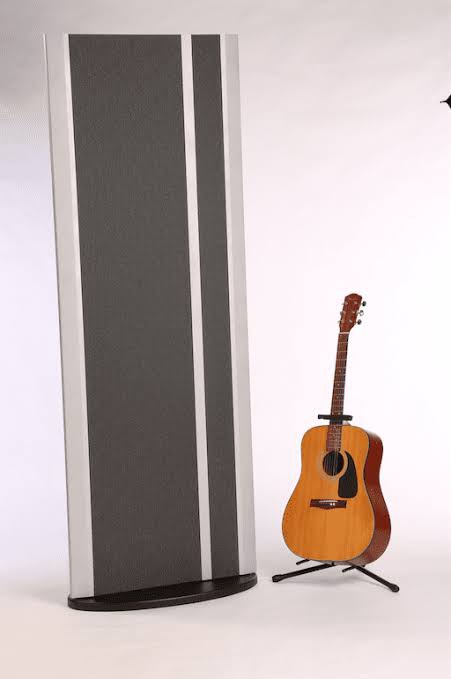
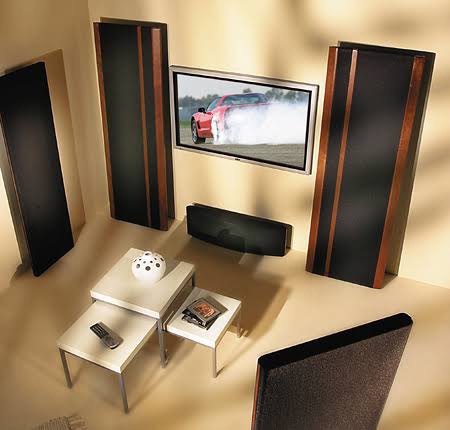
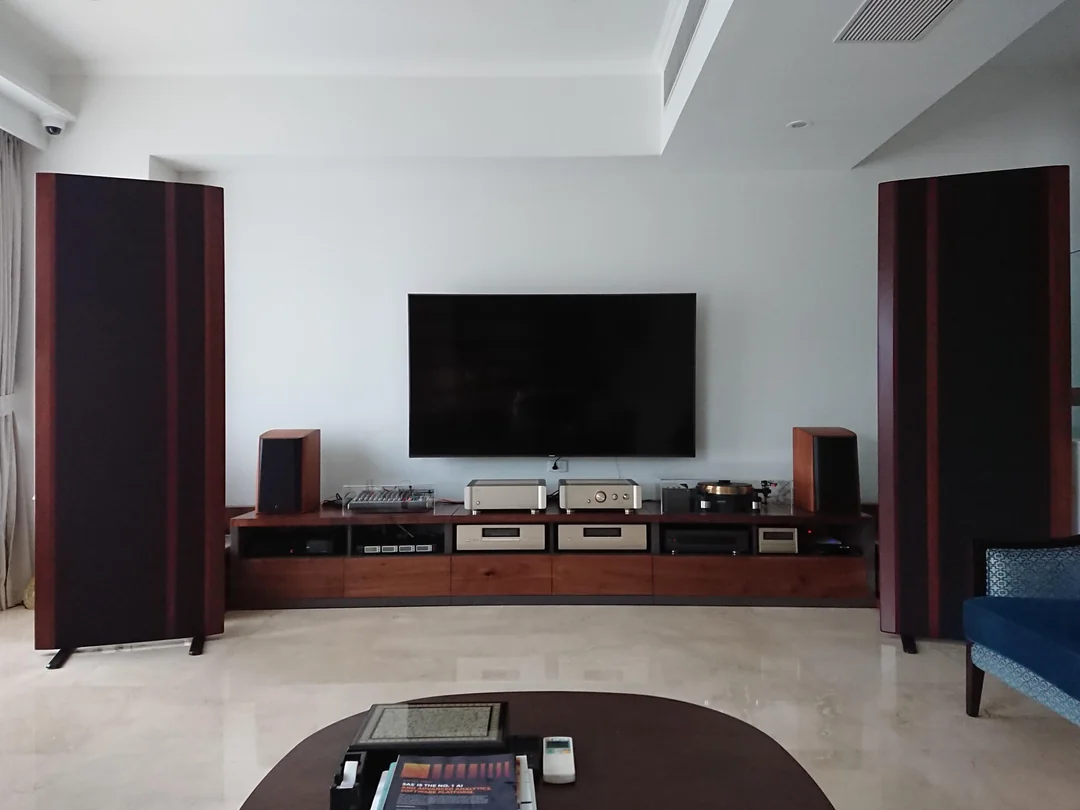
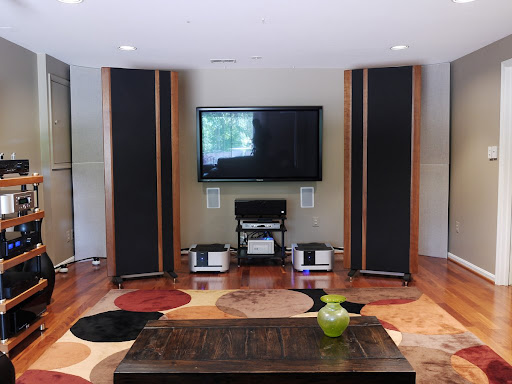

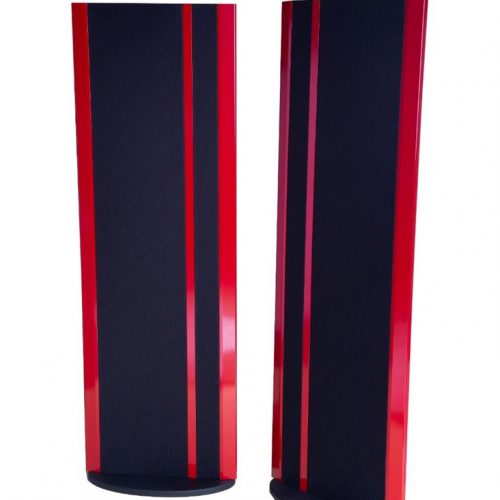


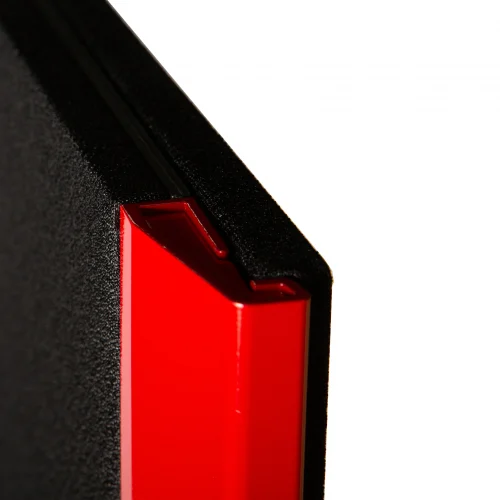
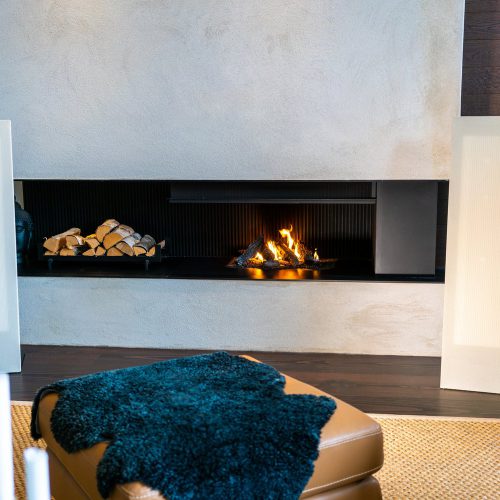
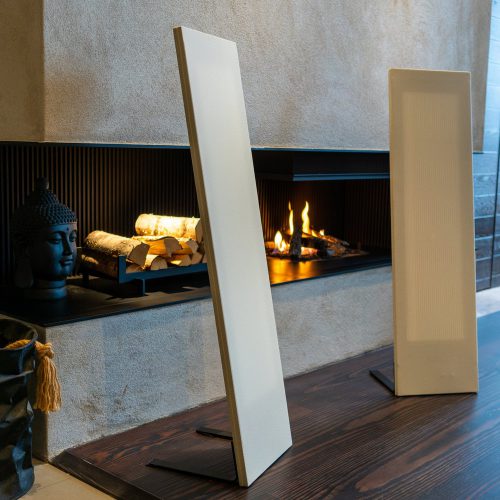
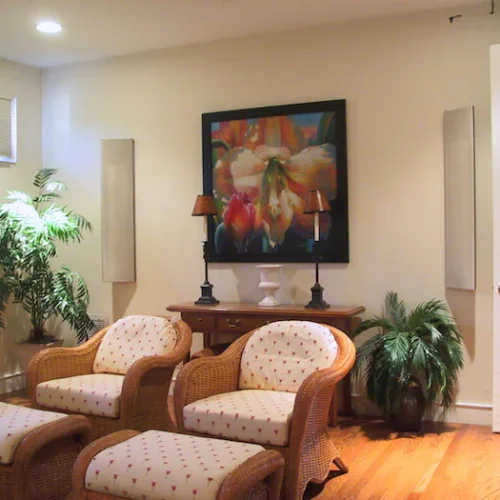
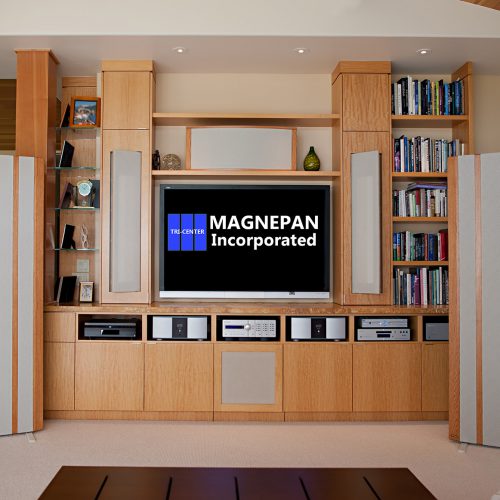
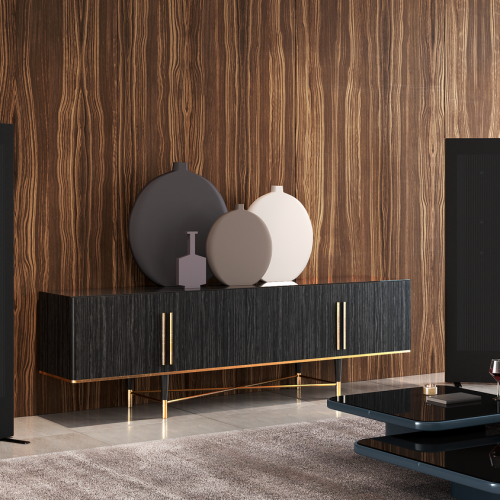
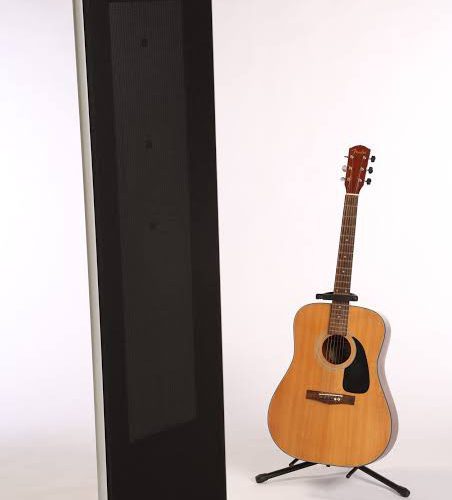
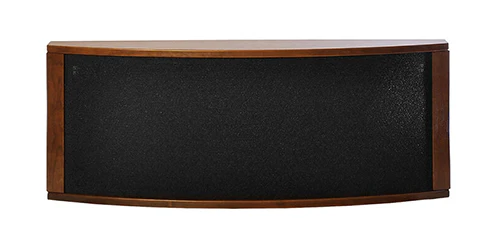
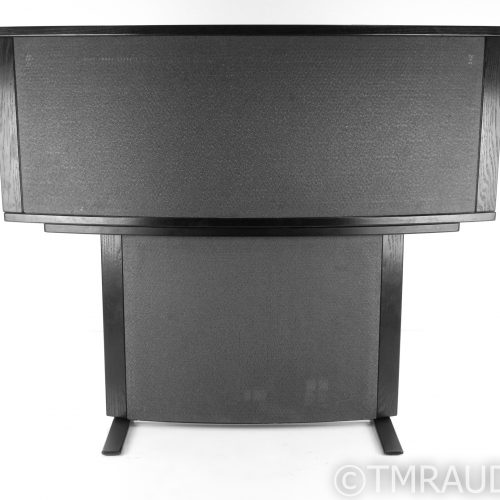
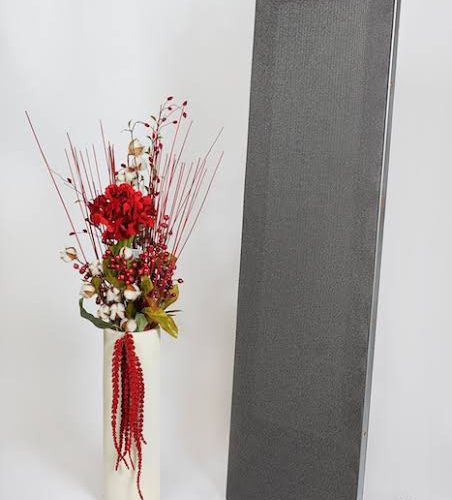
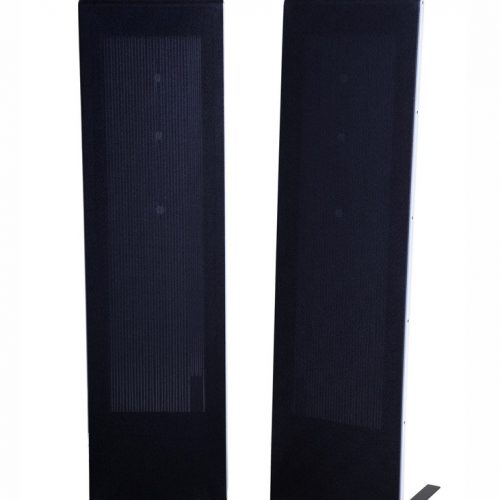
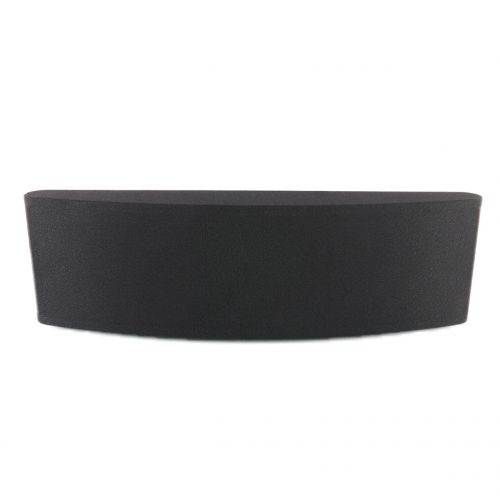
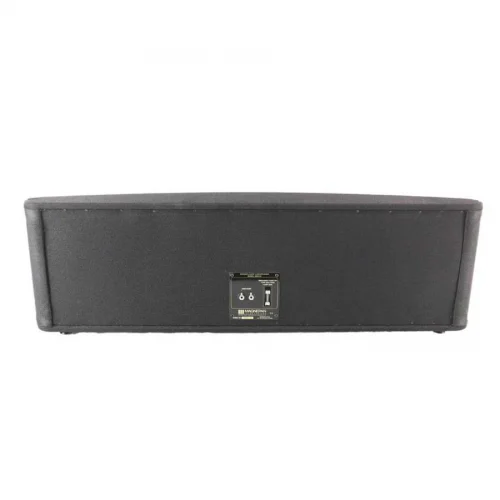
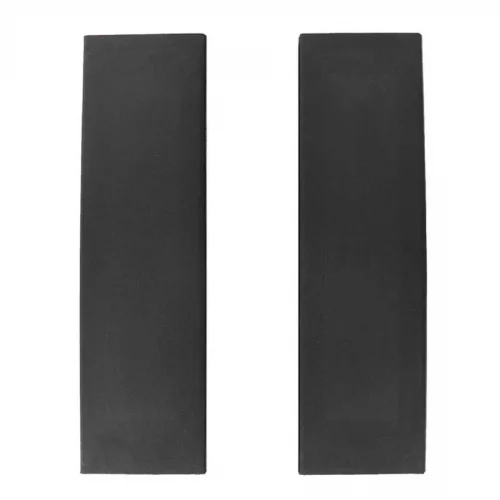
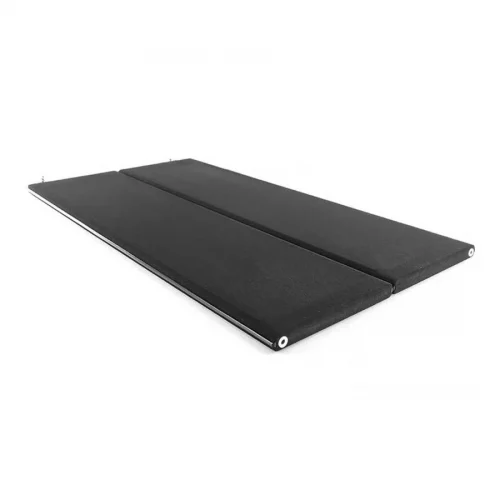


รีวิว
ยังไม่มีบทวิจารณ์